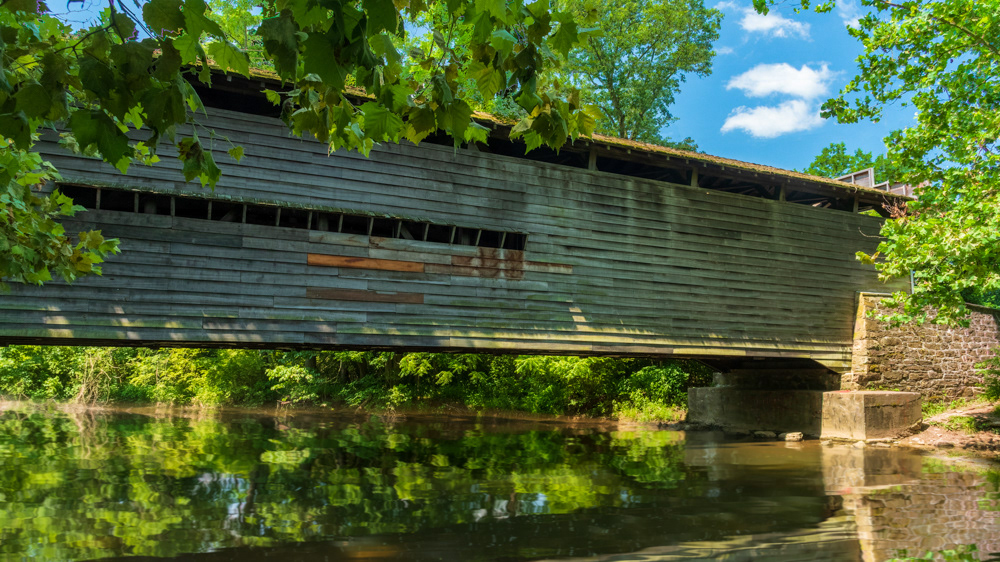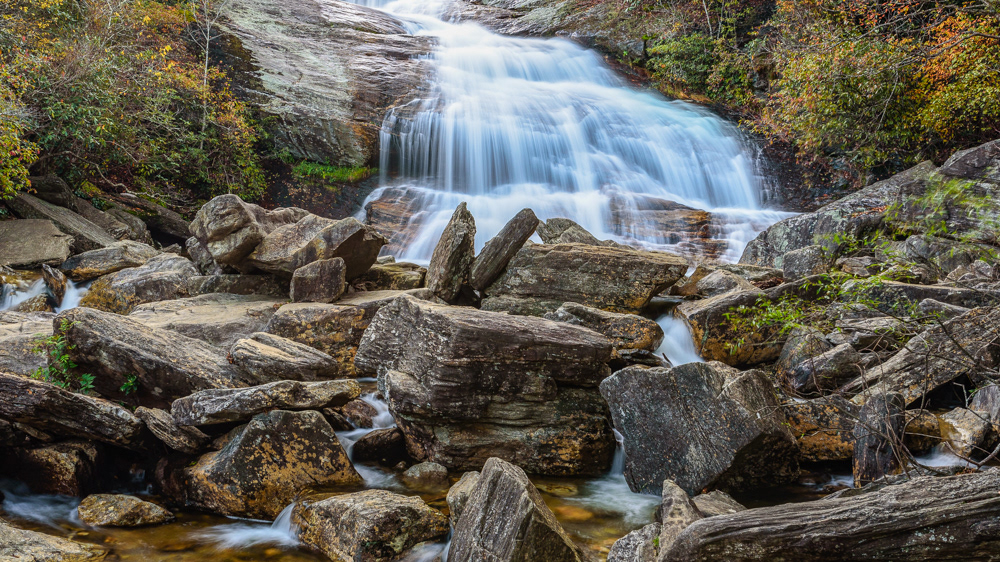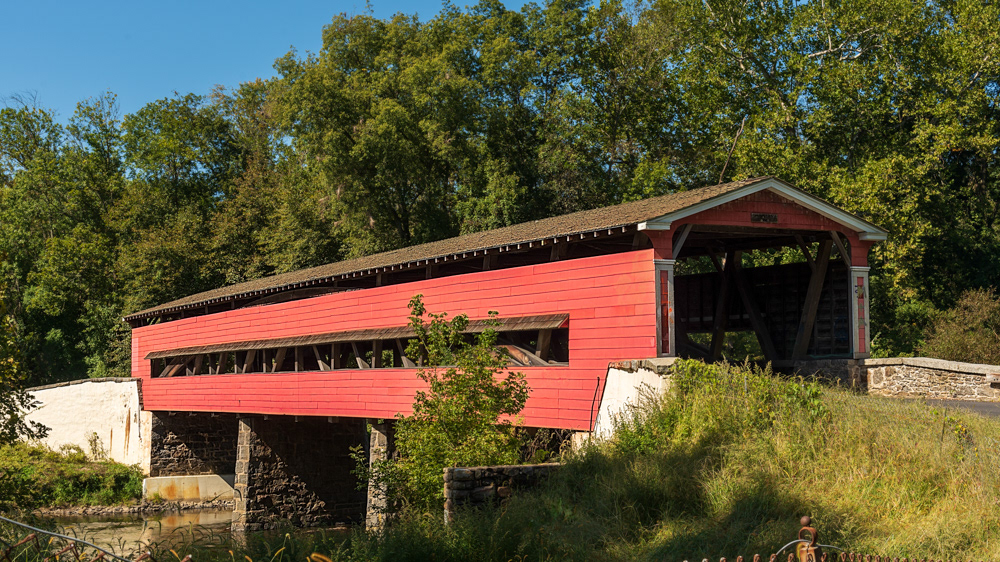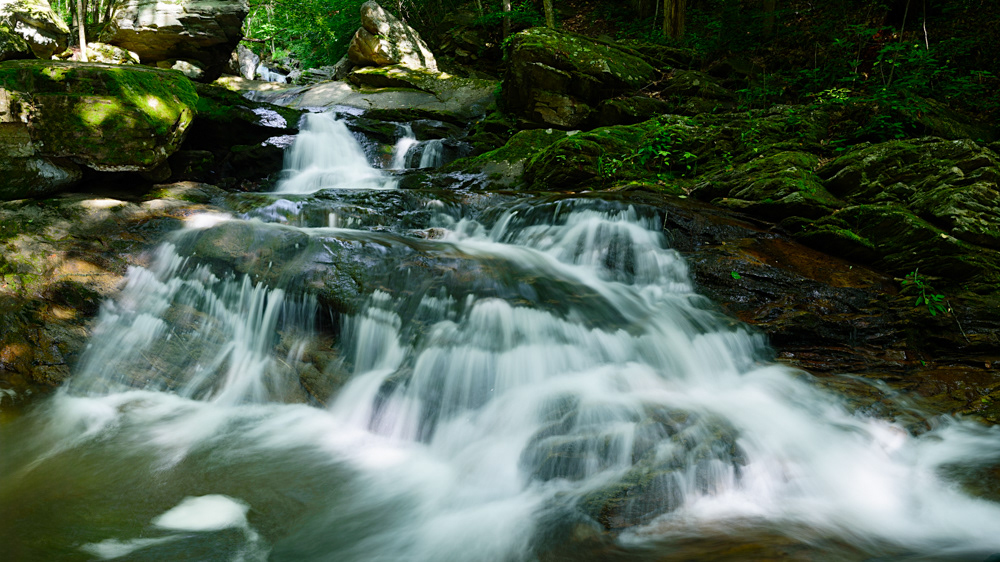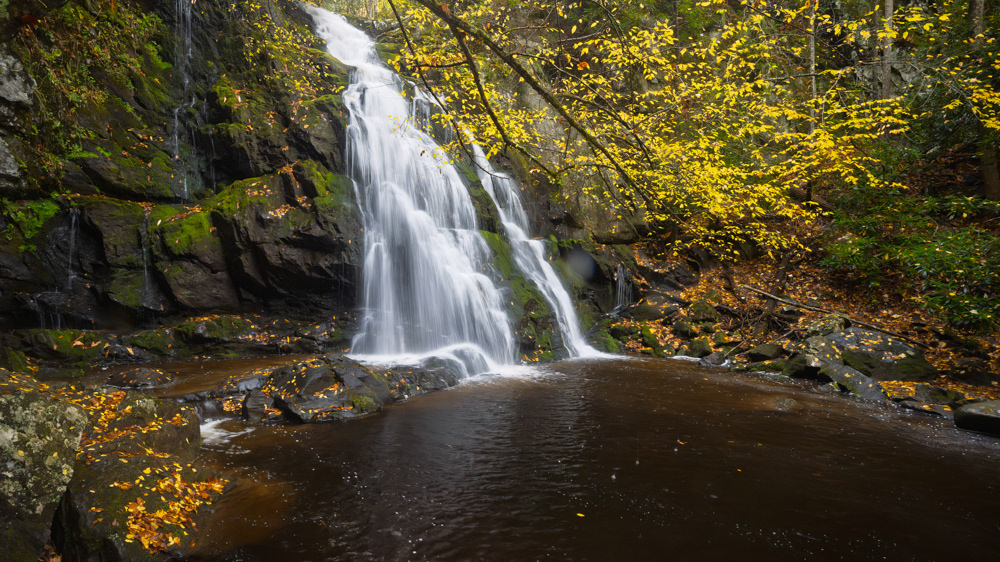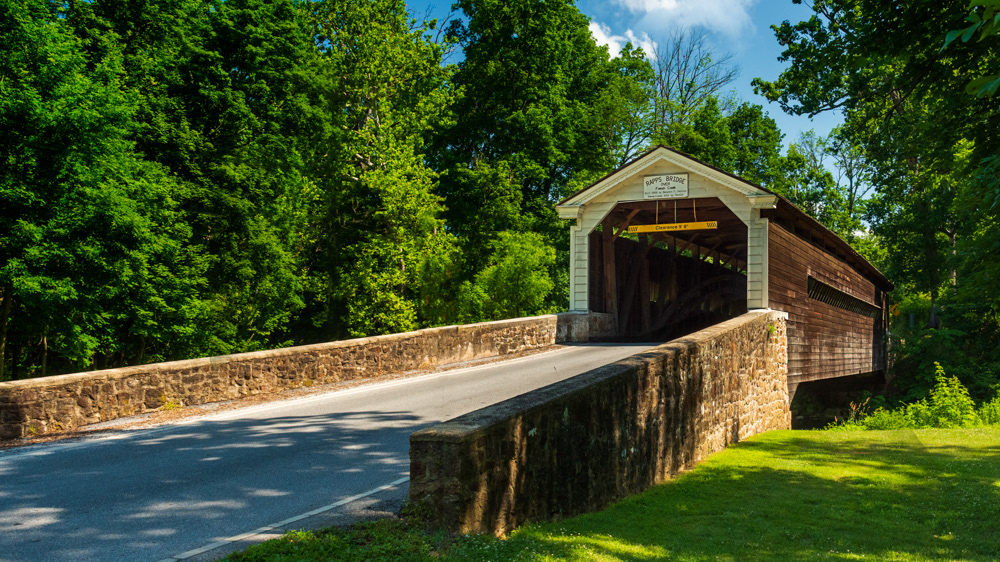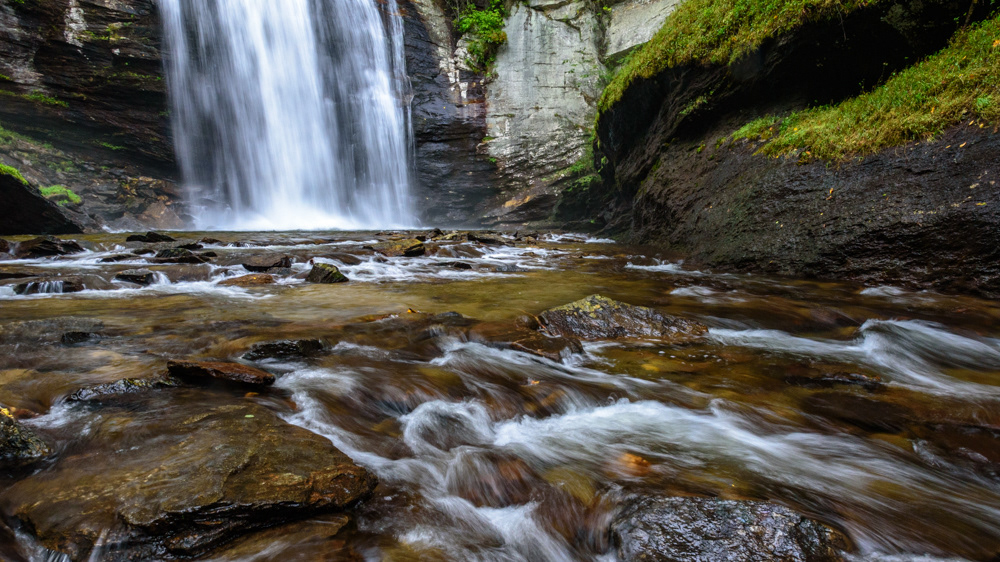Kinderdijk
After four days in Prague my wife and I flew to Amsterdam and embarked on a 10 day river cruise. We arrived in Amsterdam mid-afternoon and immediately embarked on our ship - the River Queen owned by Uniworld. Our cabin was small but well appointed and it turned out the ship was only 50% occupied so we had a lot of room on the ship and extra attention from the crew.
After dinner Gary took the tripod and hiked into Amsterdam for some night photography. These pictures were taken during that outing.

Seven Bridges Overlook

A Drawbridge at Night

The Dancing Houses at Damrak
On our first full day on the cruise we went to the Fabrique des Lumieres (Factory of Lights) which is an immersive digital art experience. A series of digital projectors cover every wall and floor of this former factory building projecting images Dutch history and showcasing its artists.
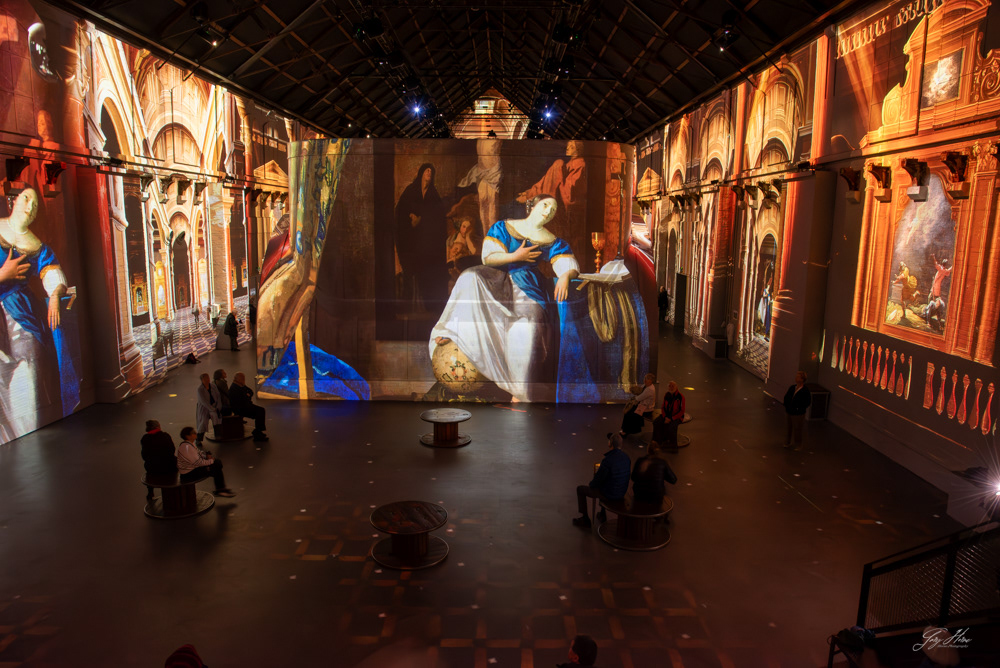

After that we took a canal boat cruise through Amsterdam. It turns out there are many dancing houses in Amsterdam. All Amsterdam's buildings are built by driving wooden posts into the ground and then building on top of that foundation. Of course, the "ground" is very wet and right next to a canal. Over the years these posts sink farther into the ground but not uniformly in all four corners of the house. So the house begins to lean toward the posts that are sinking the most.
After lunch we walked to the Jordaan neighborhood which is near the Anne Frank House. In the evening we went to the Lookout Tower bar in the A'DAM building for a panoramic view of the city.
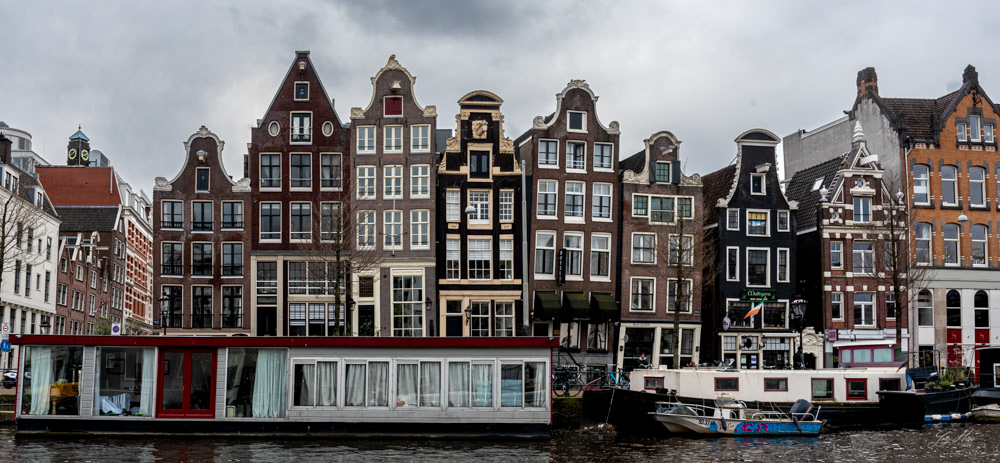
More Dancing Houses
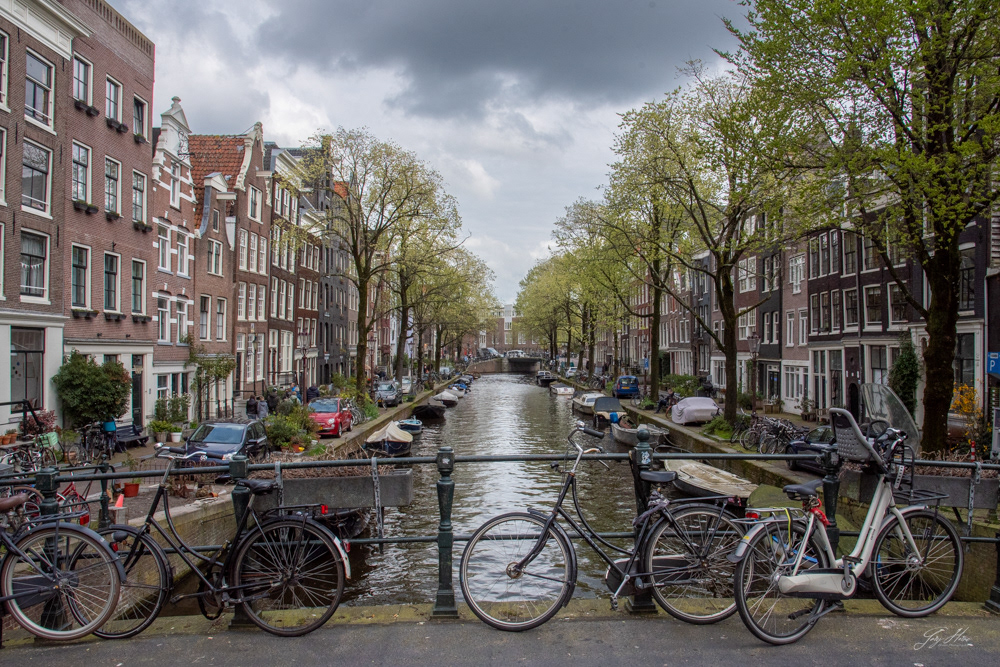
Jordaan

Anne Frank House

Jordaan
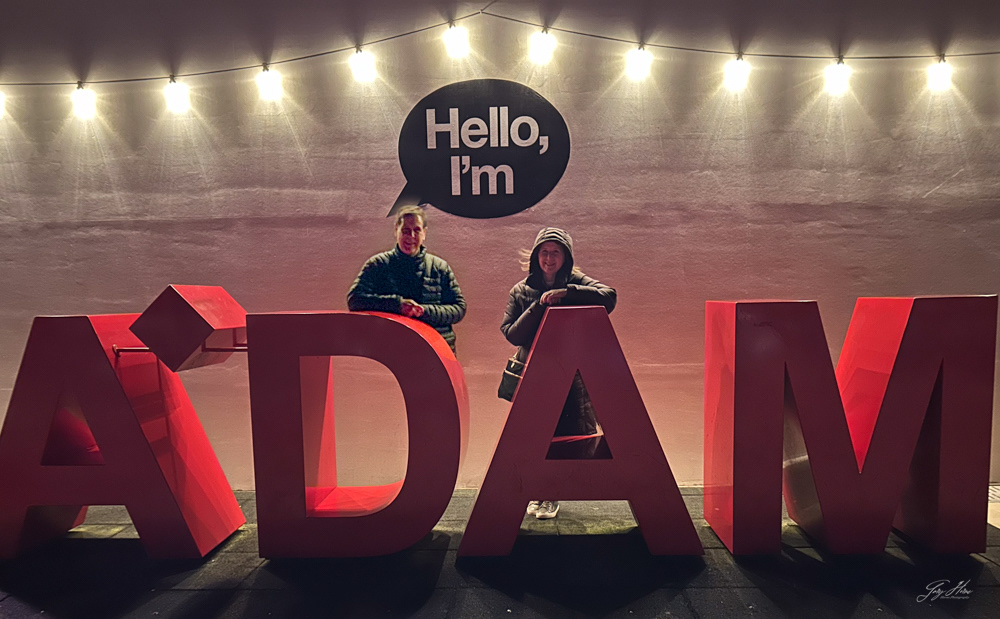
A'DAM
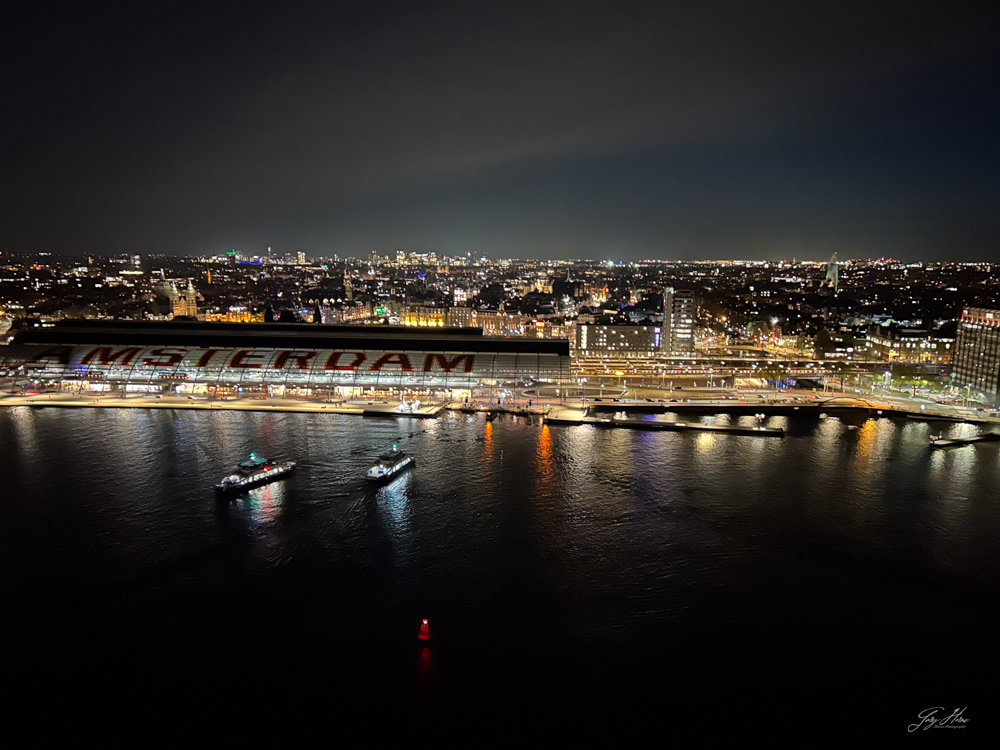
Amsterdam
Overnight the ship sailed from Amsterdam to Haarlem to the west and close to the sea. We spent the morning at Keukenhof Gardens. The gardens cover 70 plus acres and are only open for 10 weeks of the year. Gardeners plant over seven million bulbs each year, making it a showcase for the Netherlands' legendary flower industry. While I am sure it is spectacular in full sun, the cloudy, rainy day we had made the colors even more vibrant.



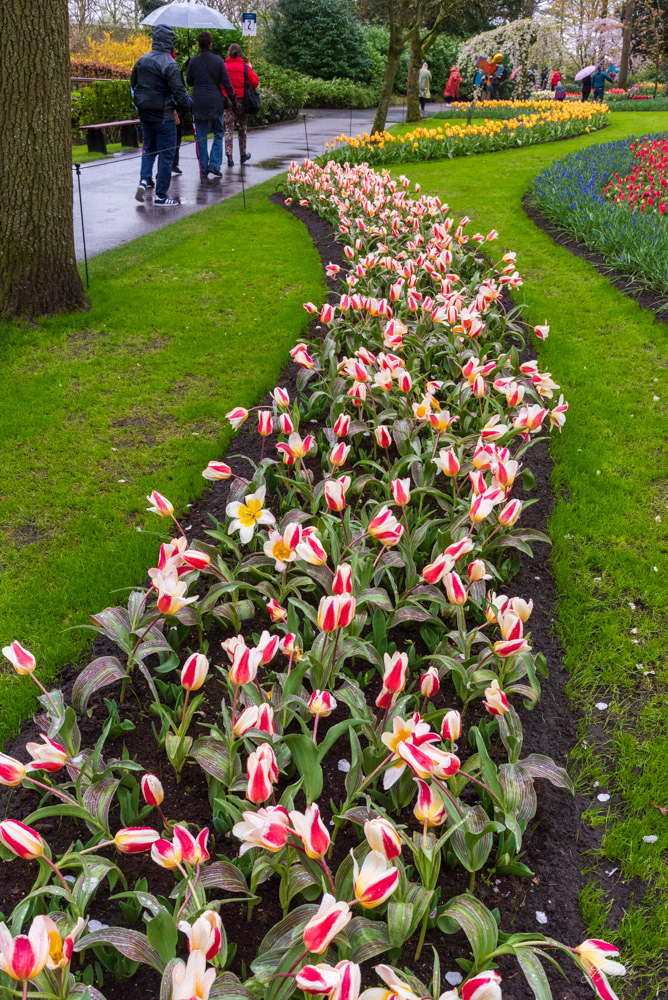
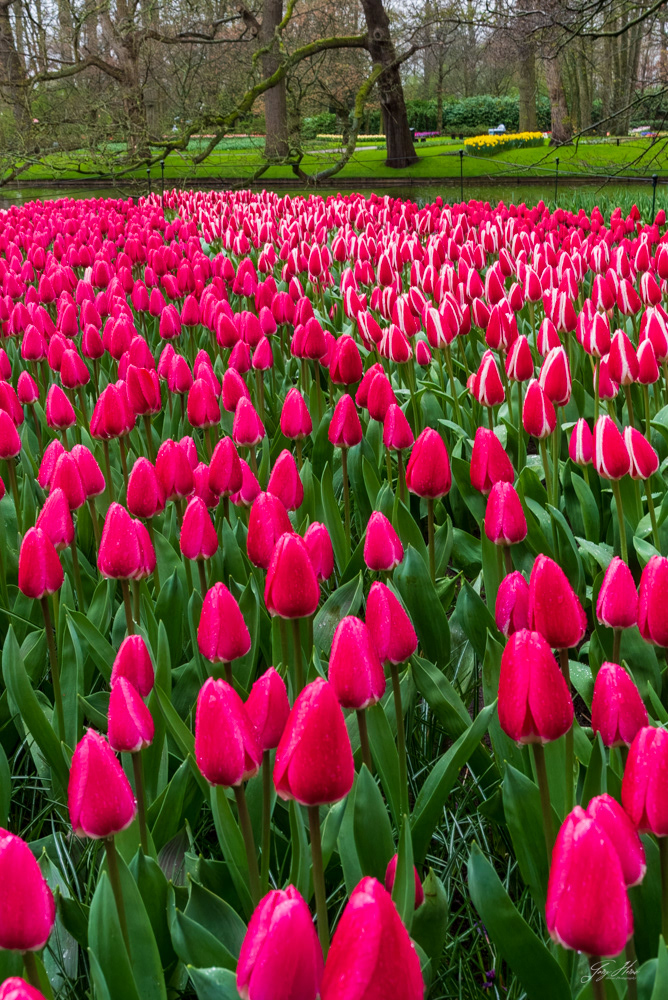
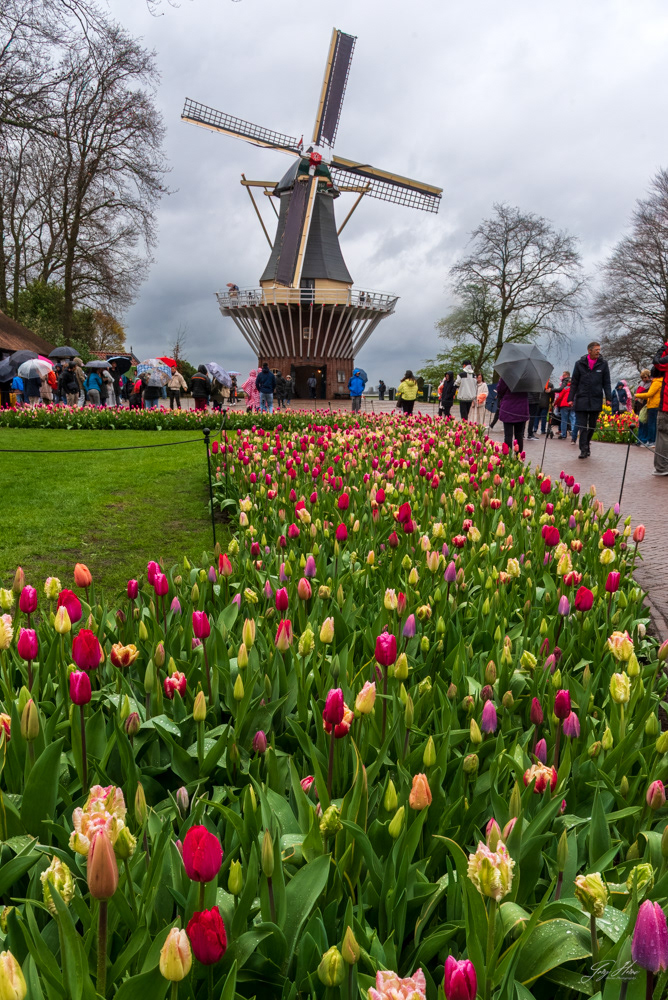

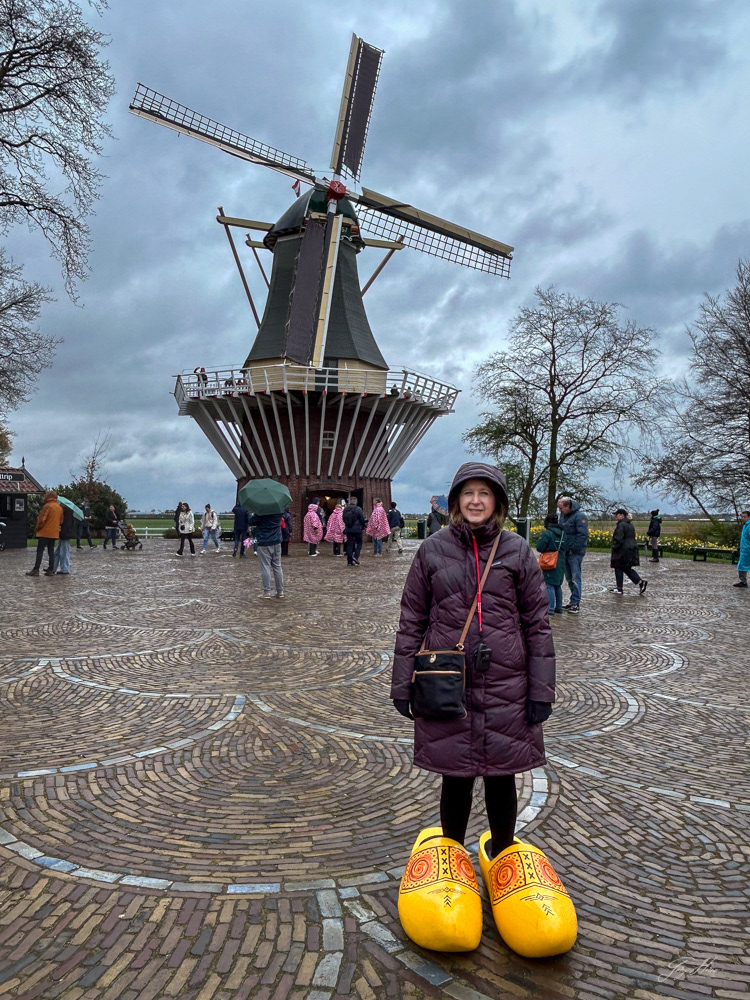
After lunch we opted for an excursion to a working windmill and a tulip farm. We learned that windmills in the Netherlands were used to move water from lower ground up to canals that take it ultimately to the sea.
The windmill blades turned the wooden gears which powered a large metal Archimedes’ screw to move the water. The speed at which the gears moved was amazing - especially considering they are over 100 years old.
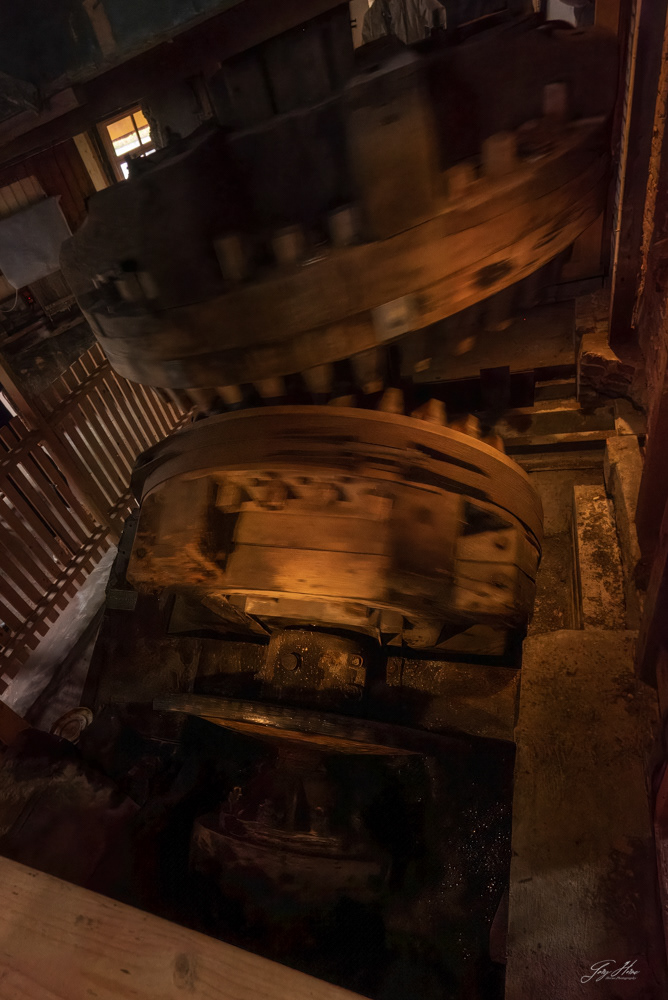

At the De Tuliperij tulip farm we learned that tulip bulbs only last about two years in any one spot and must be moved to a new spot in the garden to keep the blooming each year. We also learned that tulip farming is a huge business with many vary large tulip farms in this area of the Netherlands. This small tulip farm can only compete with the larger farms by hosting tourists and special events. We were allowed to walk into the daffodil field and take pictures.
At the end of a long day on the bus we returned to the ship for dinner and drinks and getting to know new friends from around the world.
The next day we woke up in Enkhuizen where we chose to learn about early Dutch life. The Zuiderzee Outdoor Museum is a collection of characteristic buildings-houses, cottages, warehouses and churches from all over the region to re-create an authentic 19th- century Dutch village. This represents the Netherlands before the dykes were built and when the IJsselmeer sea was tidal and salt water. This sea provided jobs for local fishermen but exposed the area to storms from the North Sea. After a particularly bad storm the Breezanddijk was built to hold the tides back and the sea slowly filled with fresh water. But, of course, this changed the nature of the area and put all of the fishermen out of business. After visiting the museum we walked back to the ship for lunch.

Zuiderzee Museum
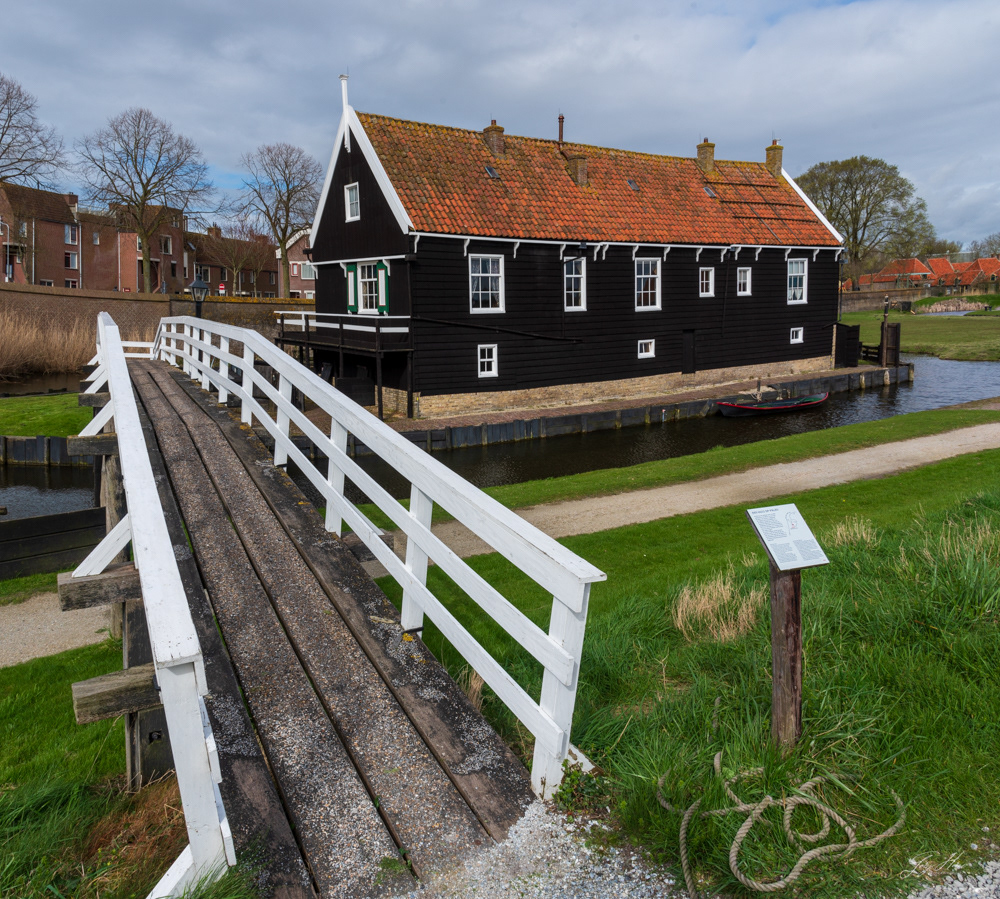
Zuiderzee Museum
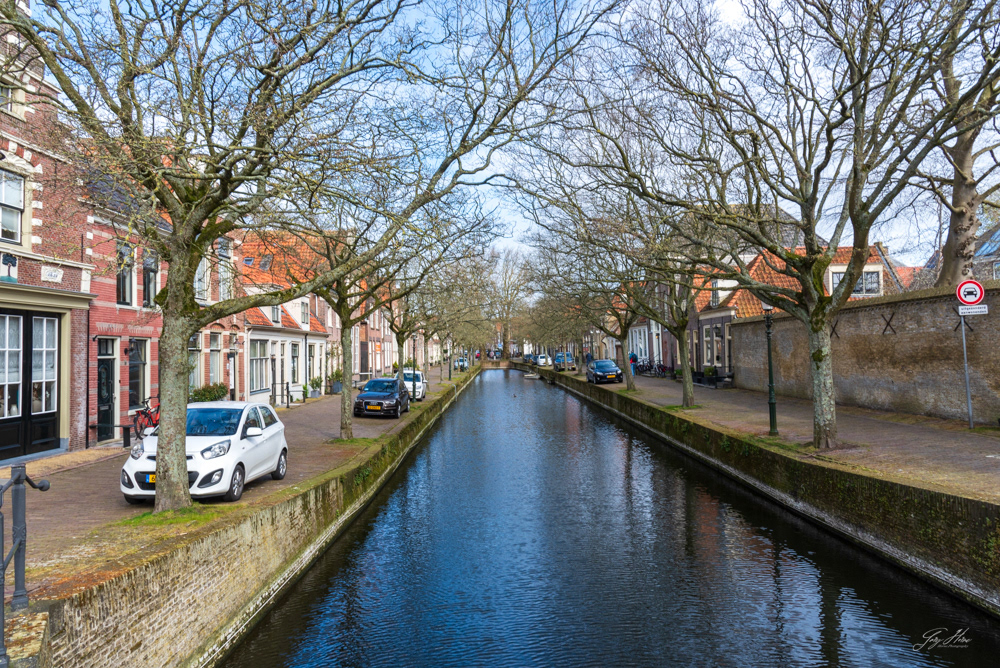
Enkhuizen
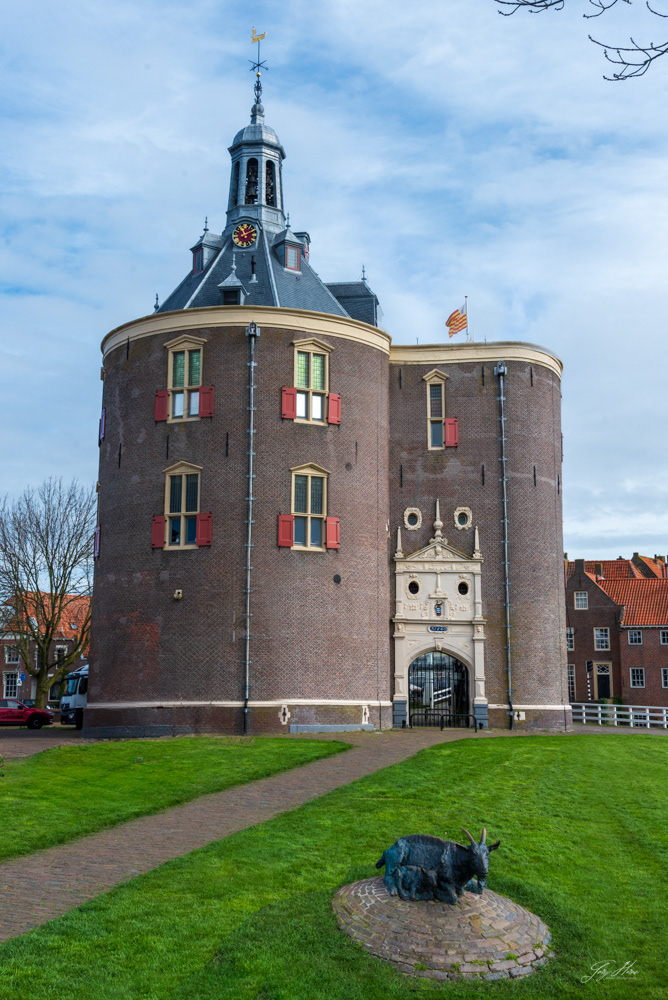
Dromadaire
After lunch we left Enkhuzien and sailed through the Navi-duct to Hoorn. The Navi-duct is where the N307 highway goes under a lock separating the IJsselmeer and Markemeer seas.
When we arrived in Hoorn we took a walking tour of this small town. Hoorn is now a quiet small town but in the 17th century it was a booming center of international trade rivaling Amsterdam. It was the home port of Dutch explorer Willem Schouten, who in 1616, named Cape Horn after his hometown.
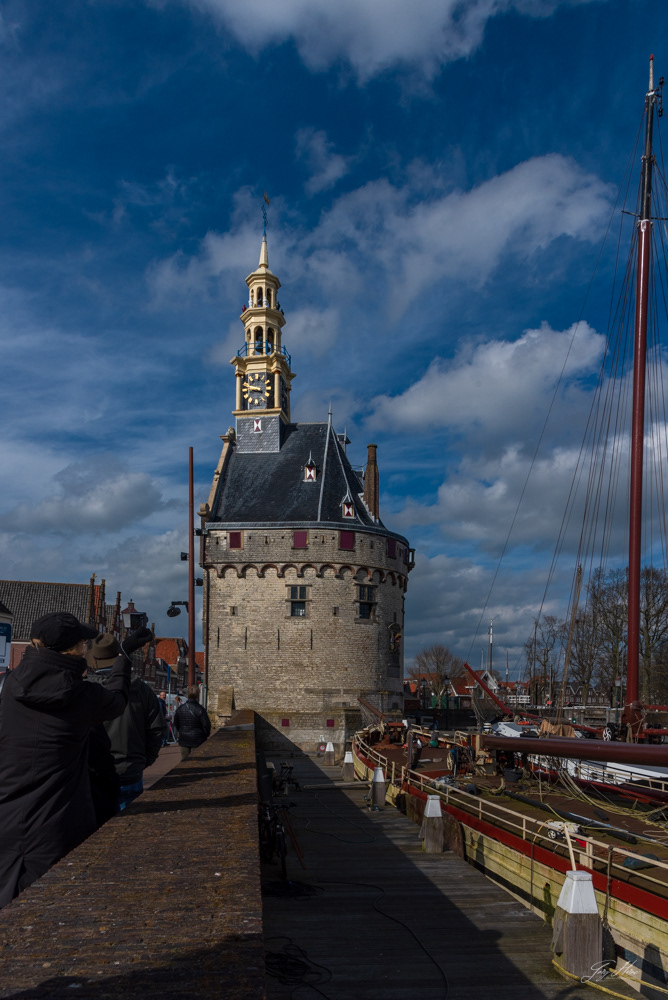
De Hoofdtoren

De Hoofdtoren
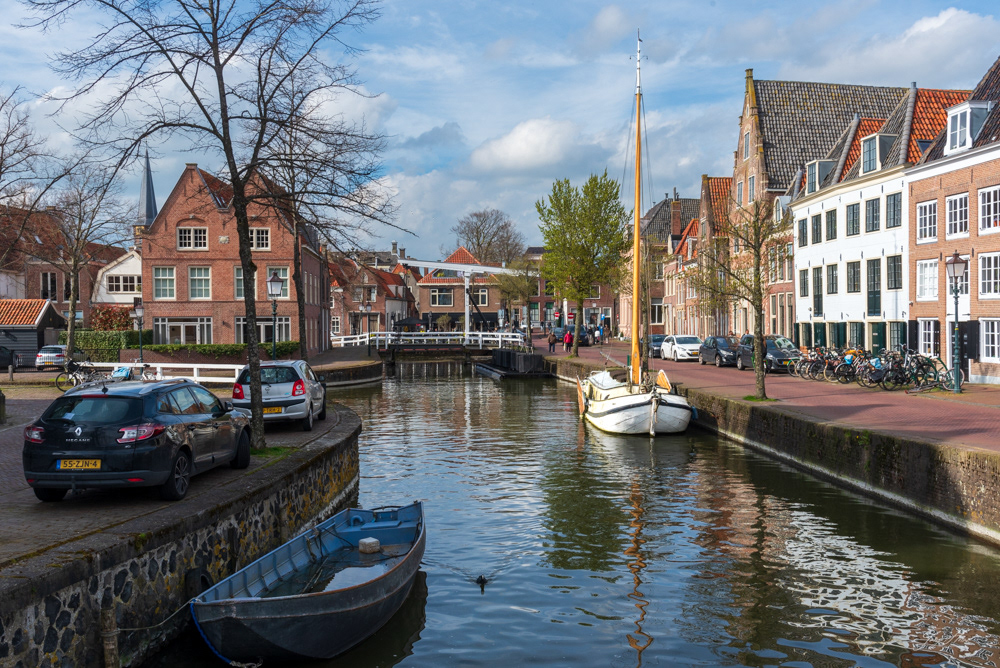
Vendise
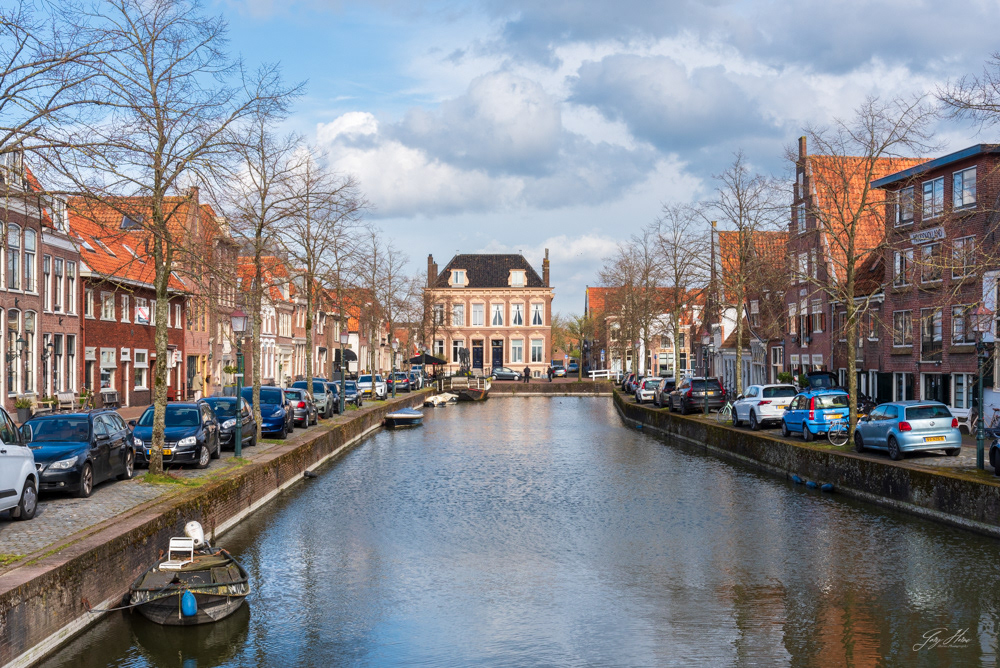
Hoorn
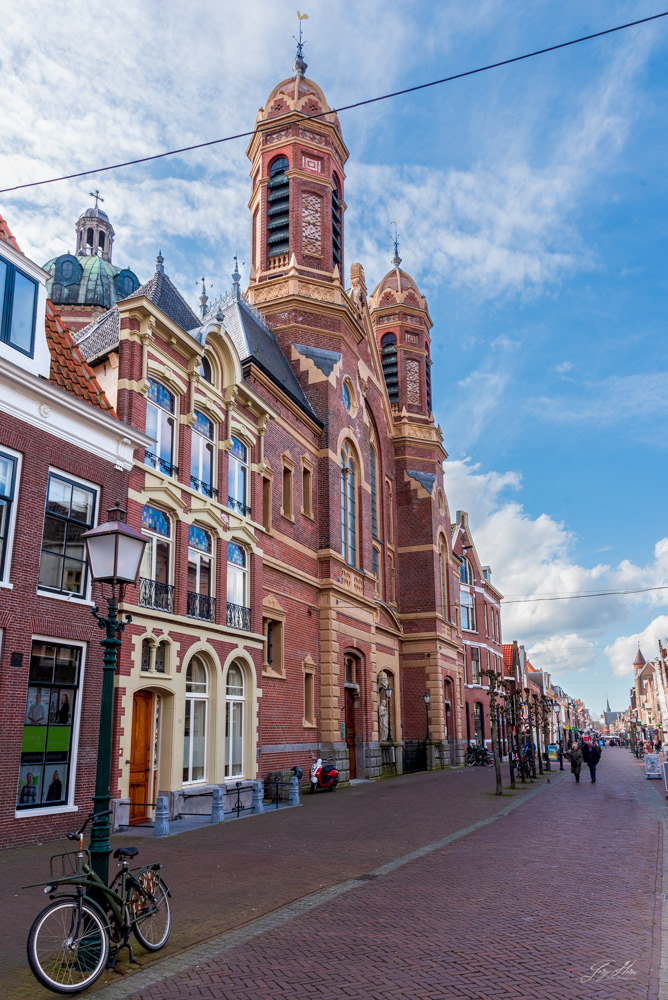
Hoorn
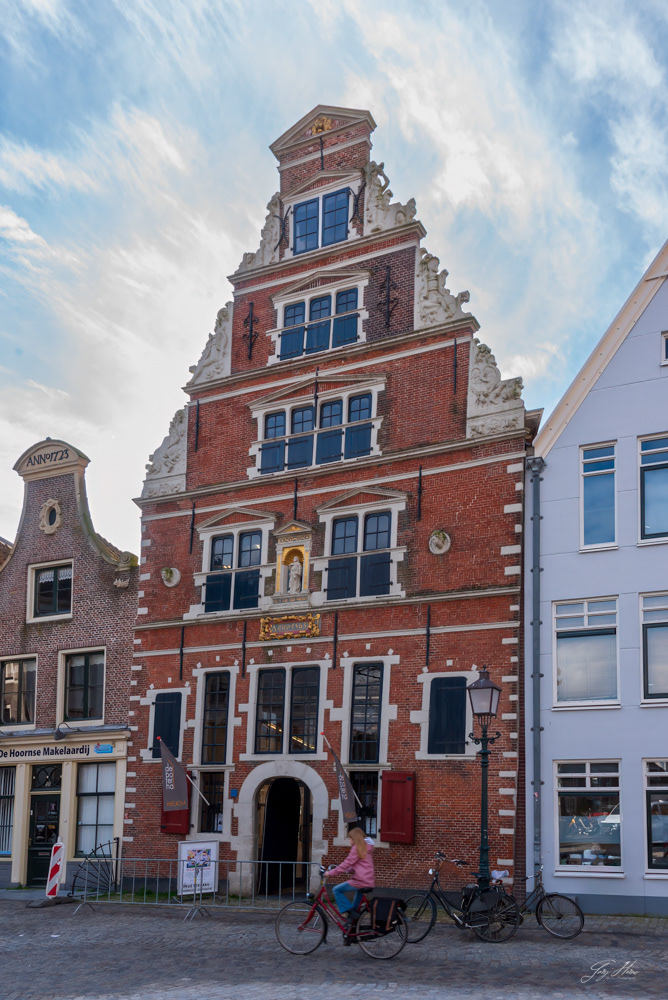
Hoorn

De Hoofdtoren
Overnight the ship sailed to Nijmegen and docked just a short walk from town. Nijmegen is the Netherlands' oldest city and its history stretches back to the Romans. It was partly destroyed in World War II and has recovered to become a lively center of the area. We joined a local guide who told us about its history.
After lunch we walked back into town to enjoy the afternoon bustle in the shopping area. We had our first Stroopwafels of the trip before returning to the ship for afternoon cocktails and dinner.
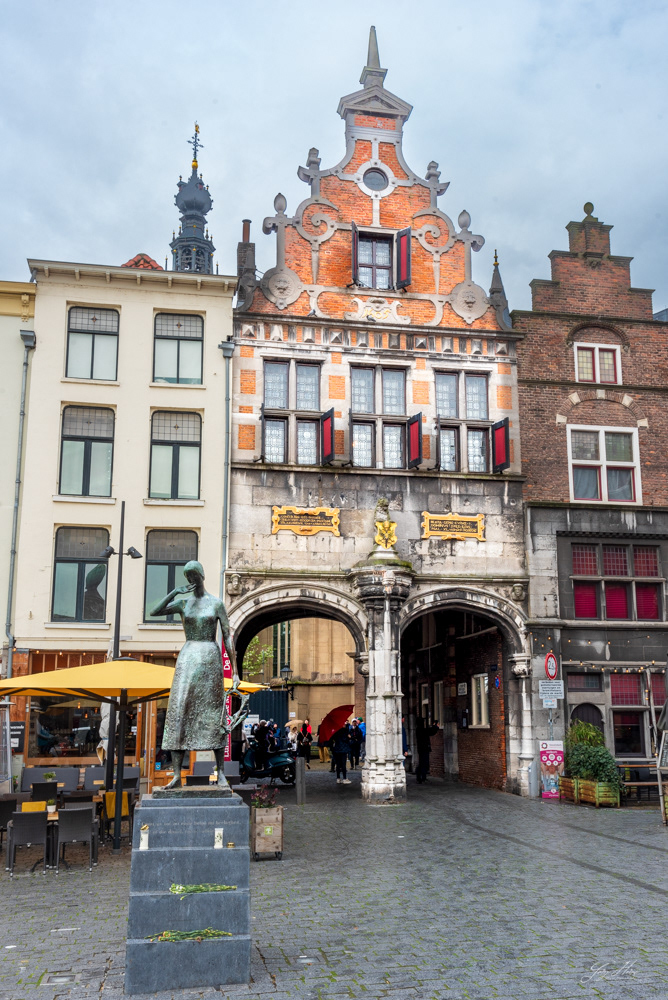
Kerkboog

Latijnse School
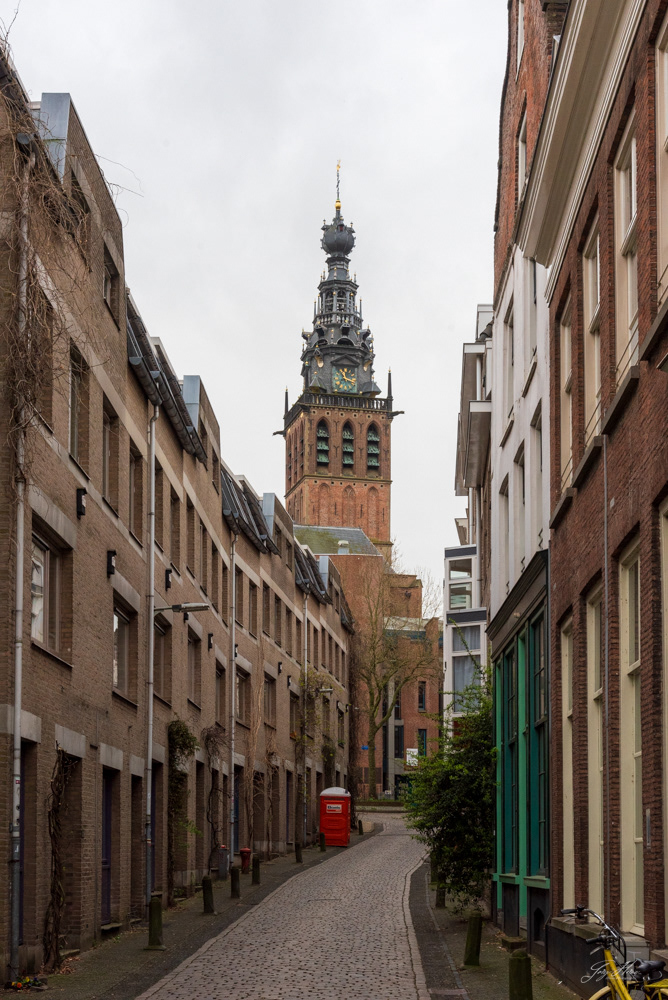
Saint Stephen's Church

Begijnenstraat 46-48

Kerkboog

Sint-Nicolaaskapel
The next day we were in Rotterdam docked right in the heart of the city next to the Erasmusbrug (Erasmus Bridge).
We signed up for a trip to Delft, which, of course, is famous for the blue pottery and we visited the factory and saw an artist hand painting a bowl. But, Delft is also a charming old Dutch town with lots to explore. Our guide took us through town pointing out the notable sights. We had lunch in a restaurant right off the main square before returning to the ship.

Delft Factory

Painting Delft Pottery
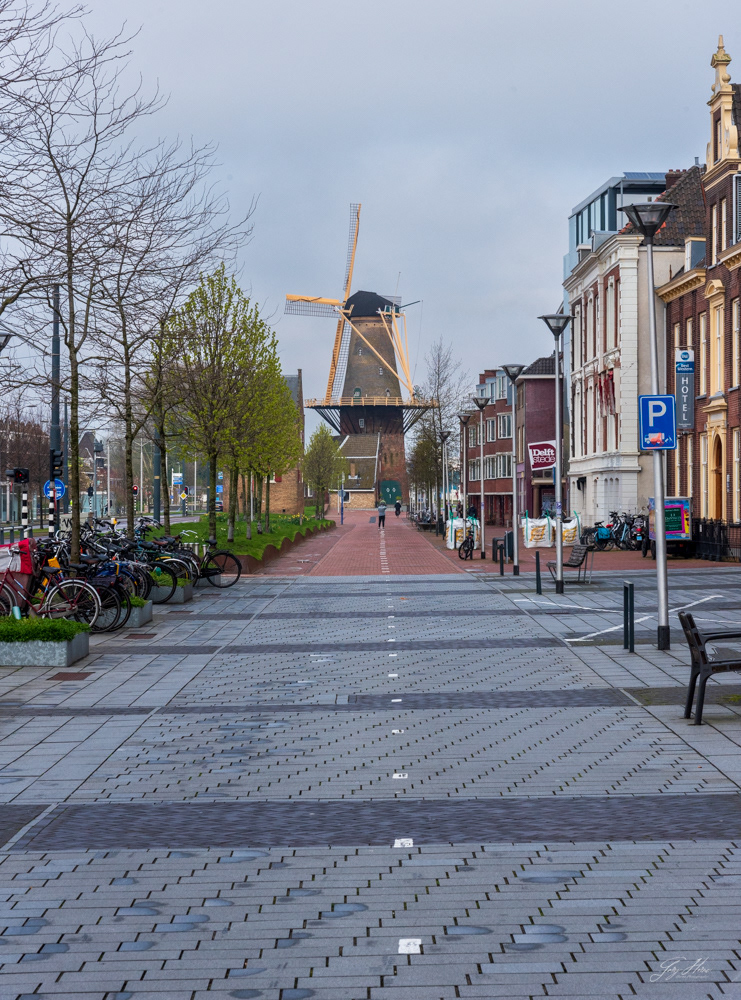
Delft

Gemeenlandshuis
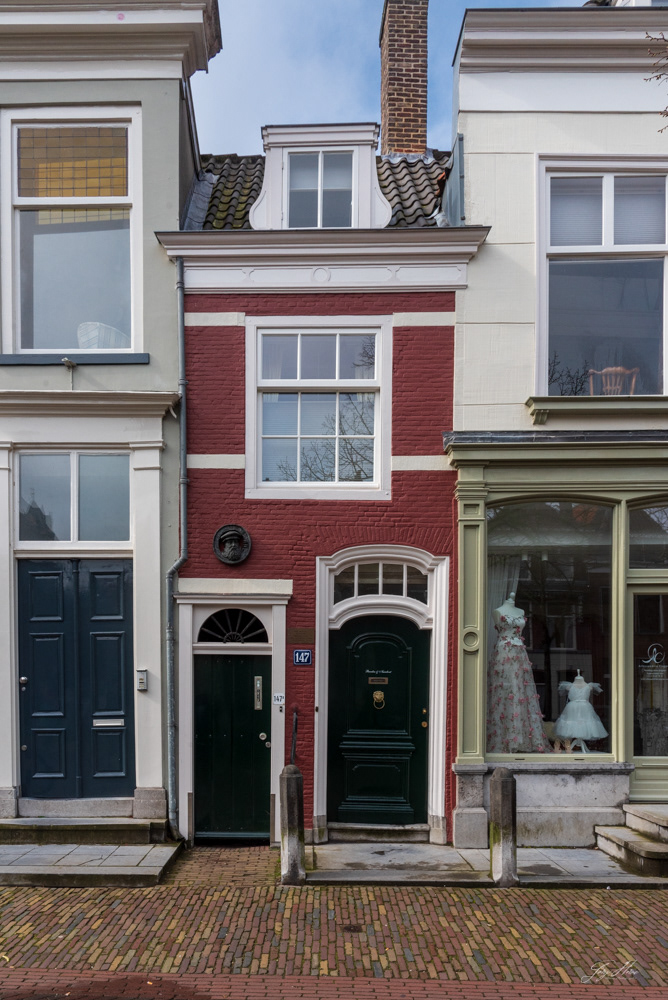
Narrowest Building
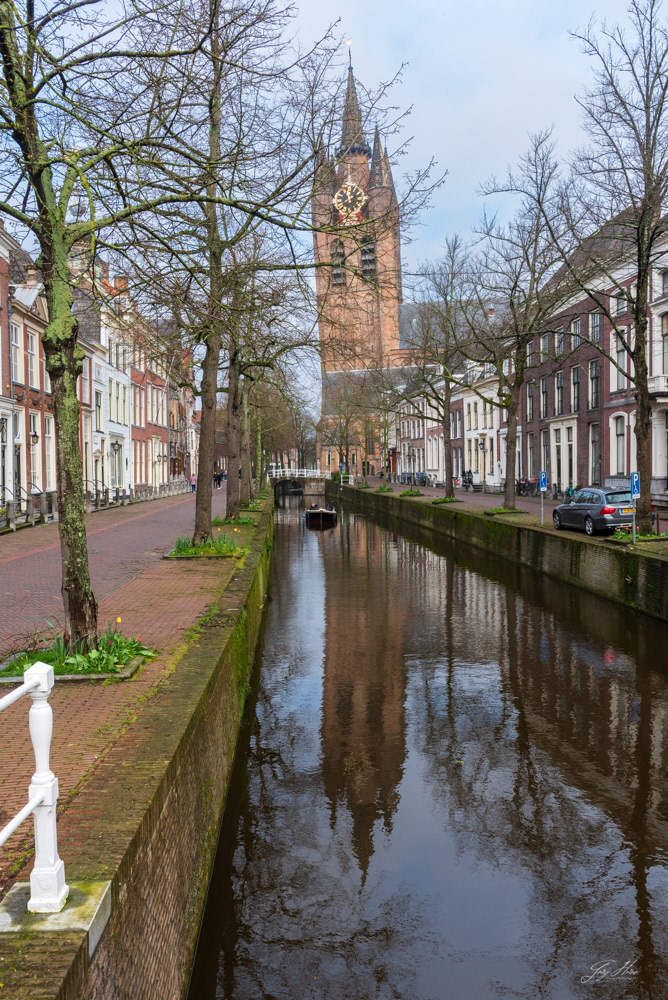
Olde Kirk

Nieuwe Church
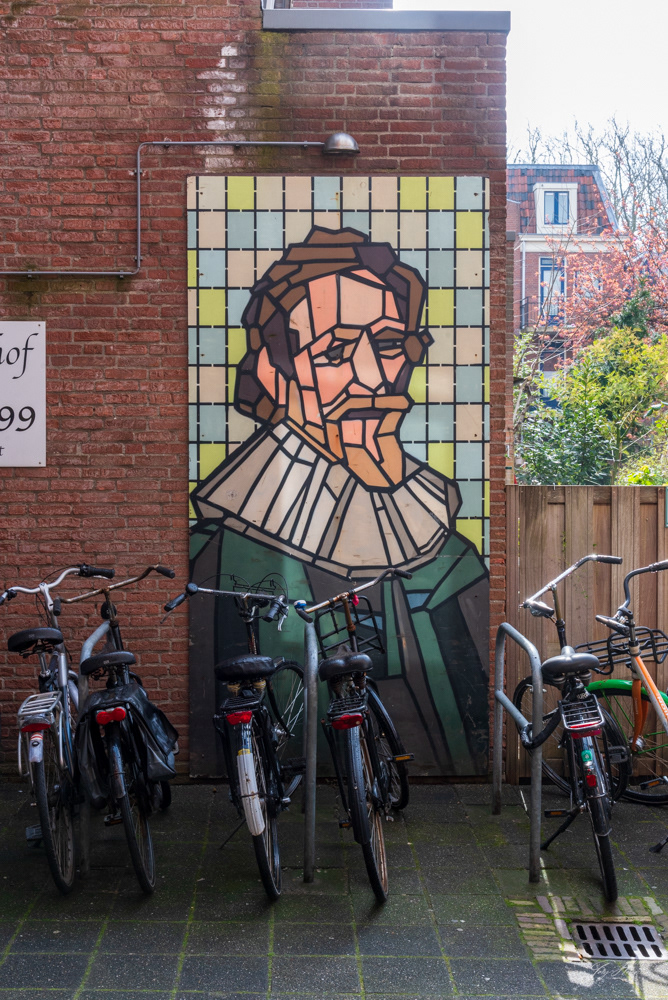
Van Gogh
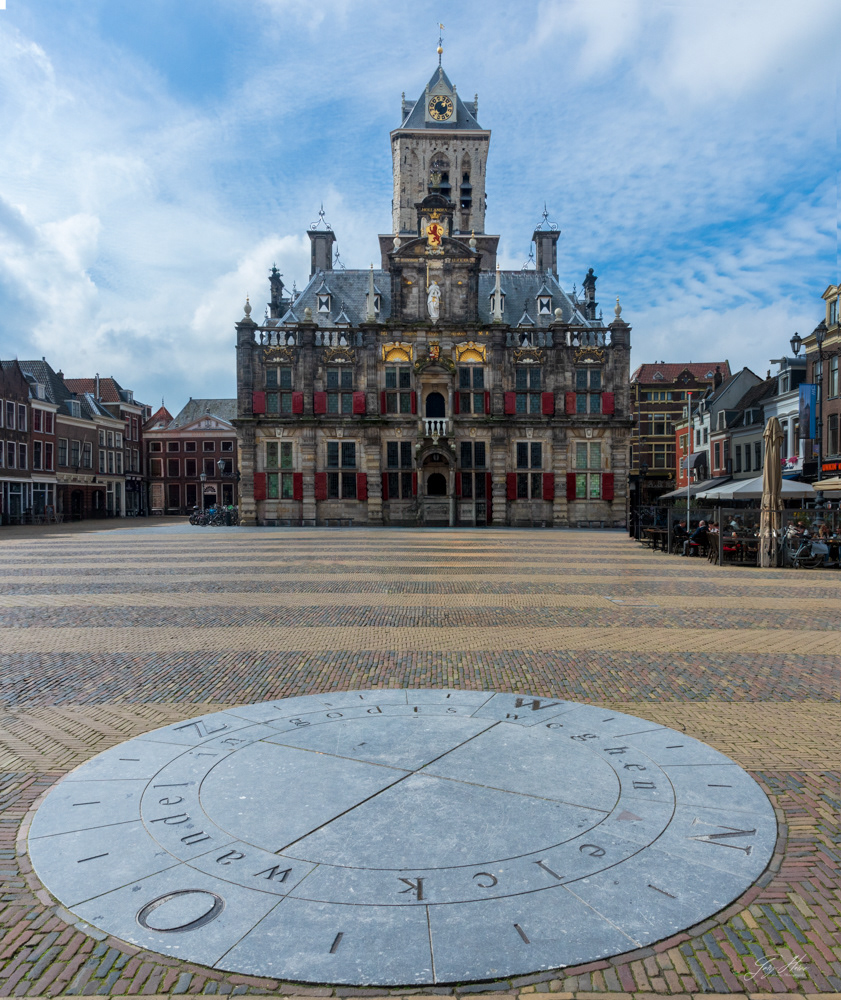
Stadhuis

Bicycle Planters
After a quick lunch on board we were off to the Kinderdijk windmills. Kinderdijk is a village in the Netherlands' South Holland province situated in the Alblasserwaard polder (a polder is low-lying land) at the confluence of the Lek and Noord rivers. To drain the polder, a system of 19 windmills was built around 1740. There are waterways, footpaths and bike trails all through the area allowing tourists to see the outside of of the windmills. These windmills are tended by local families to maintain the historic look. A few windmills are open as working museums.
Kinderdijk is a photographers paradise and these are only a few of the pictures taken there.
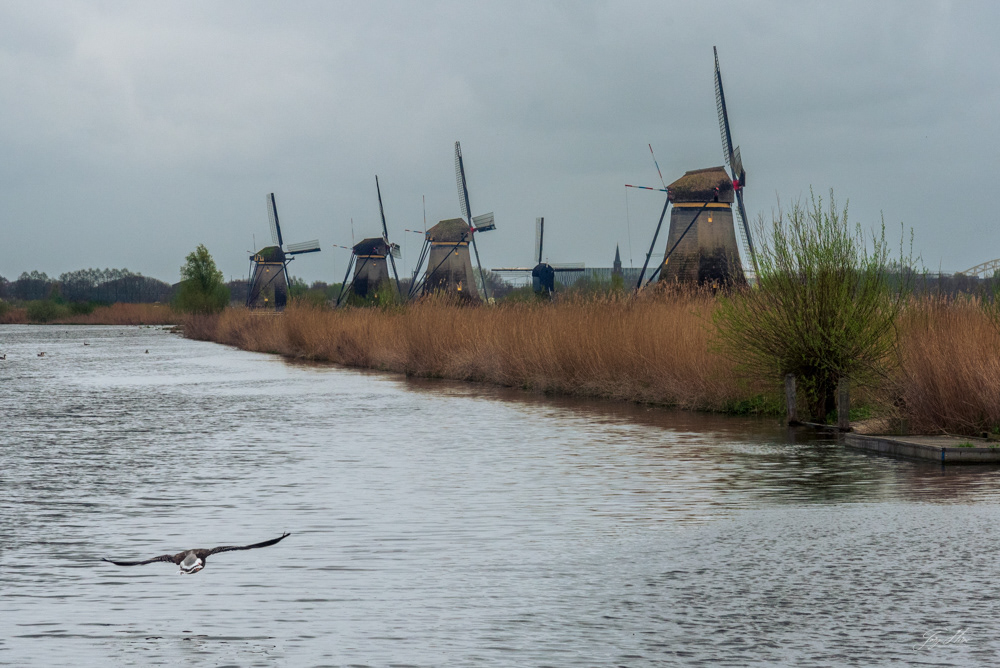
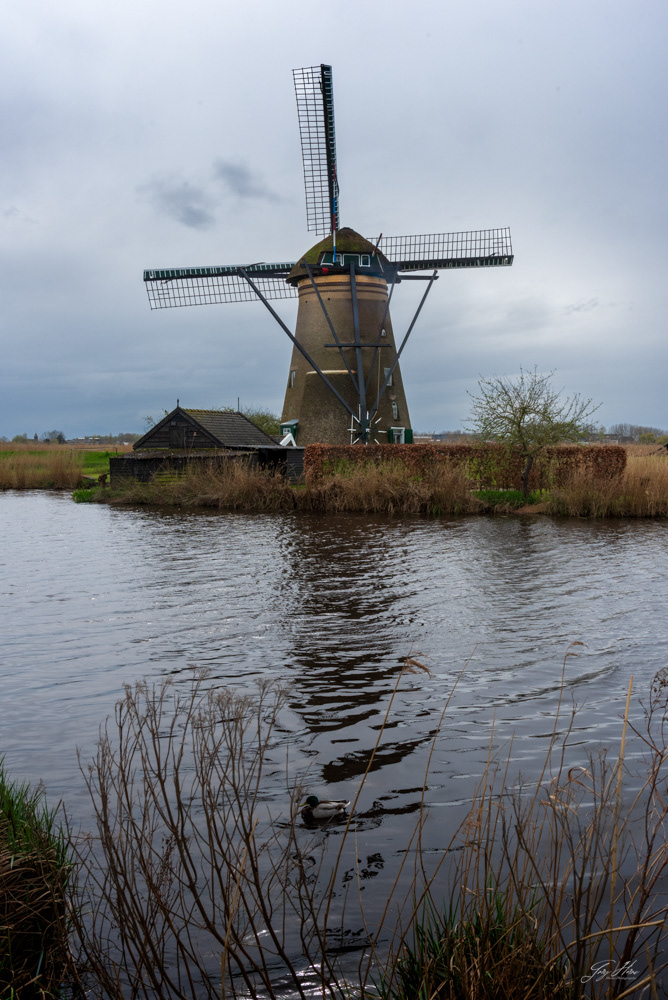
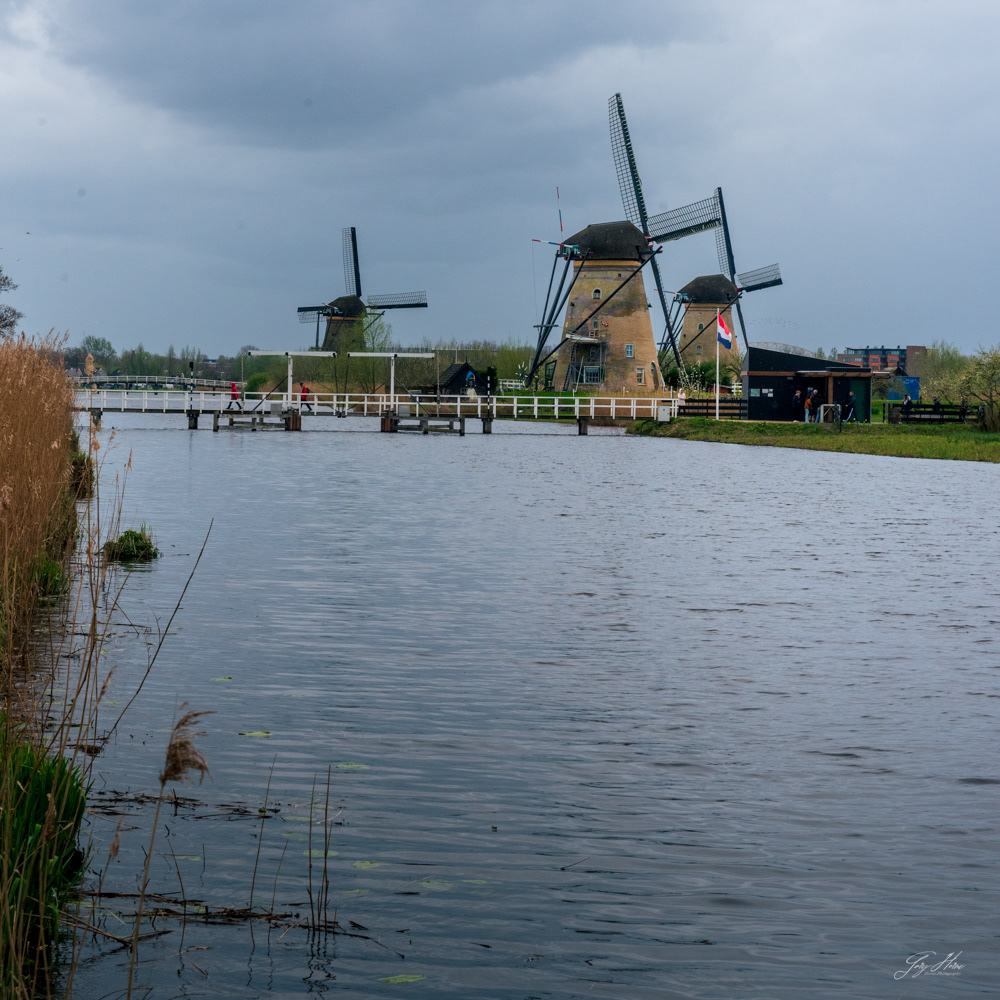
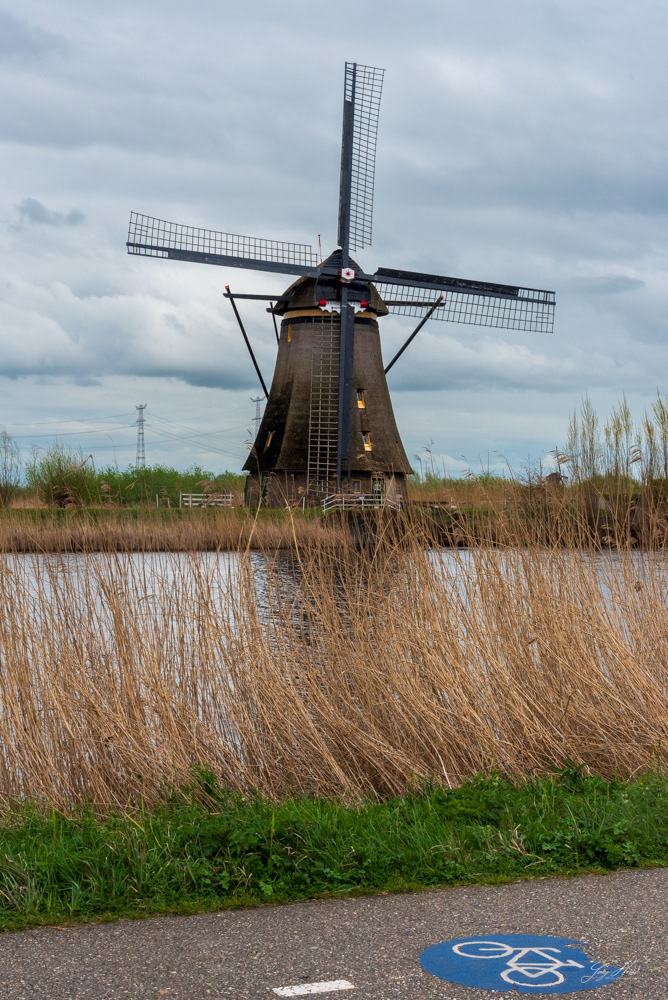
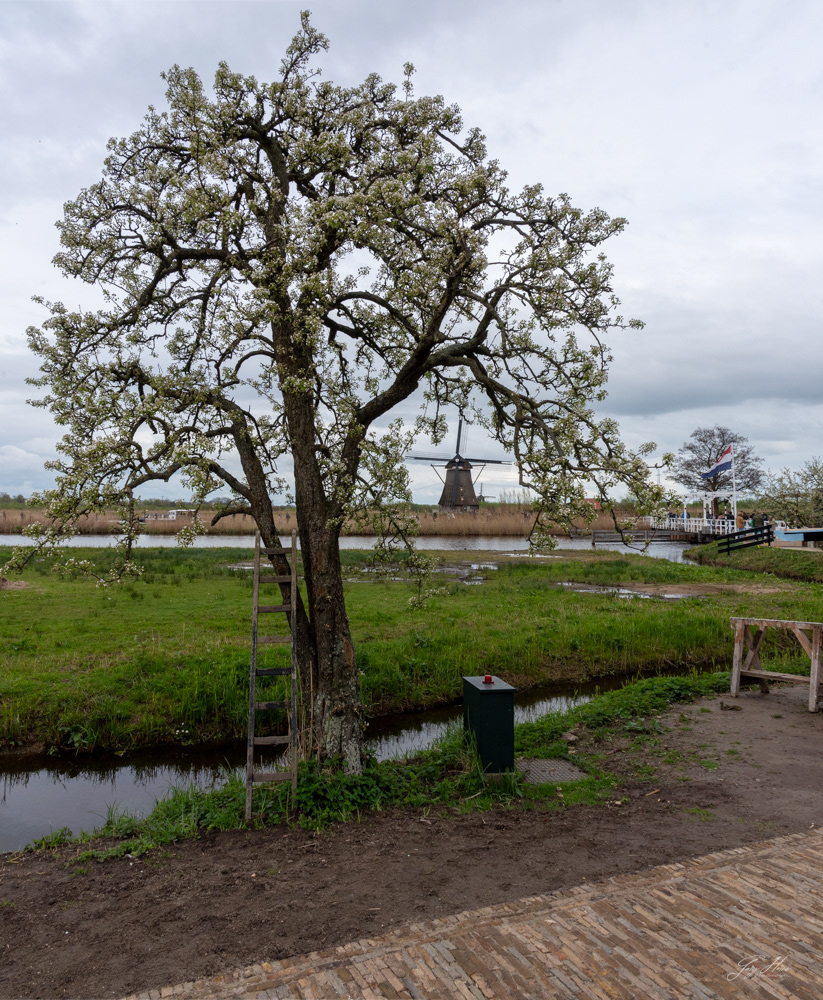
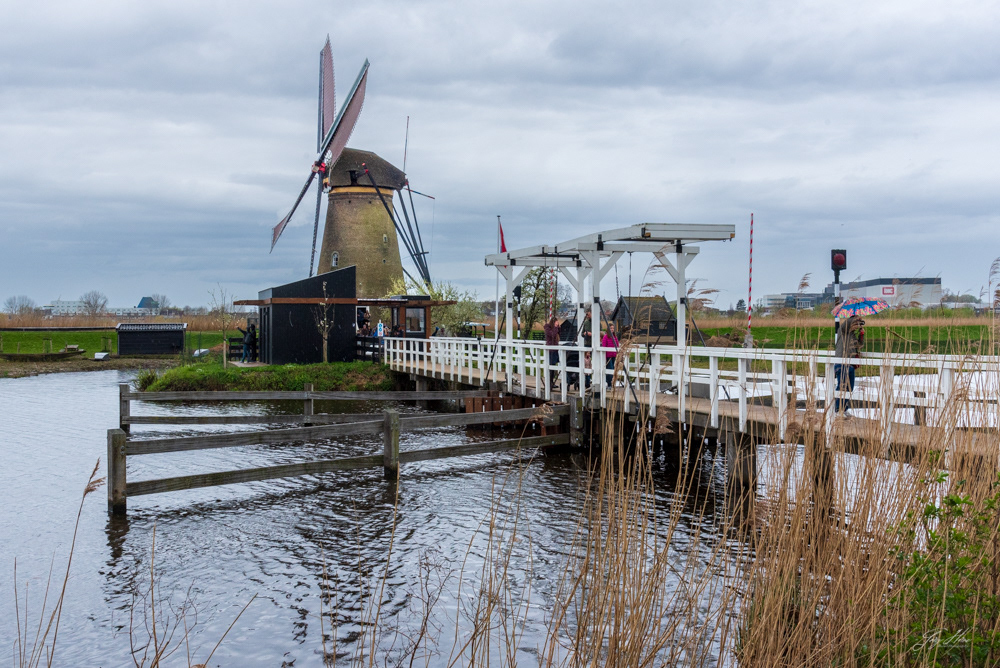


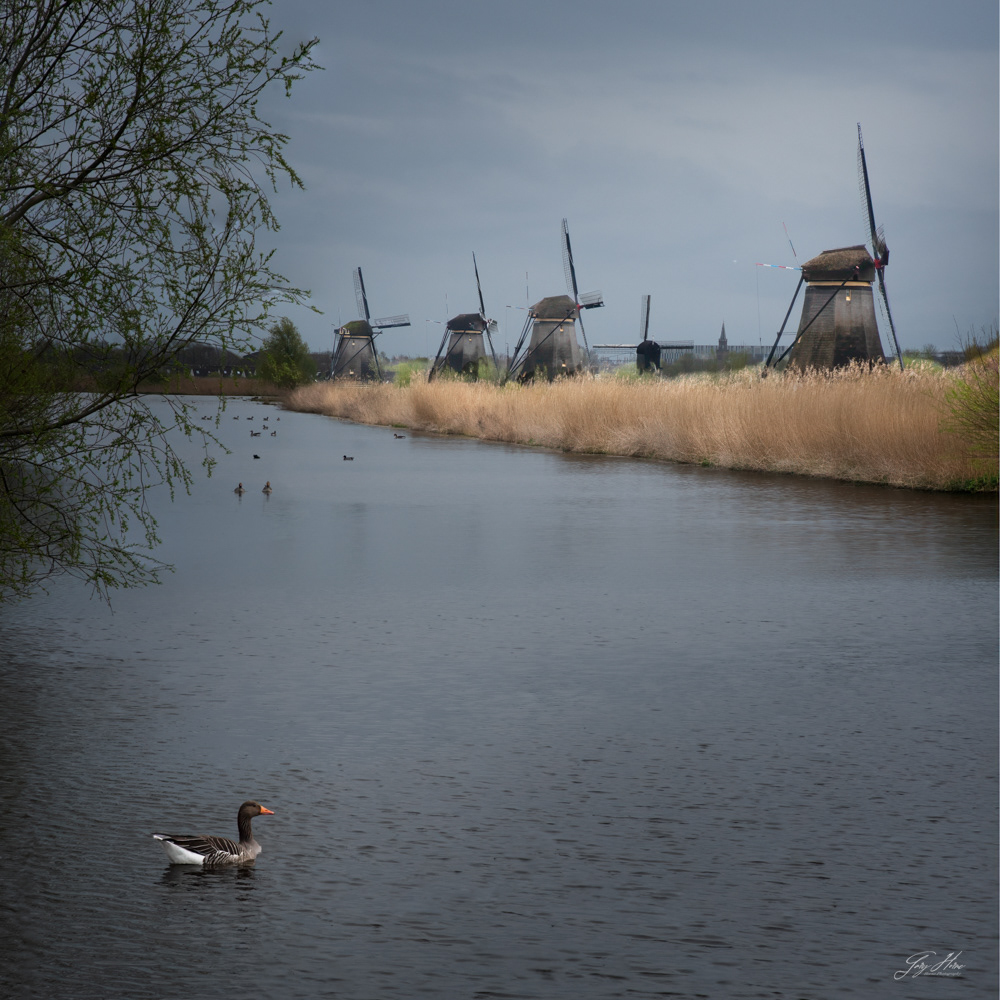
After Kinderdijk we returned to the ship and dinner.
The ship sailed from Rotterdam to Veere overnight. Veere is a charming village with a population of 1,500 in the southwestern Netherlands. It swells in size on weekends and people come from all over the Netherlands to enjoy the town and hike the area.
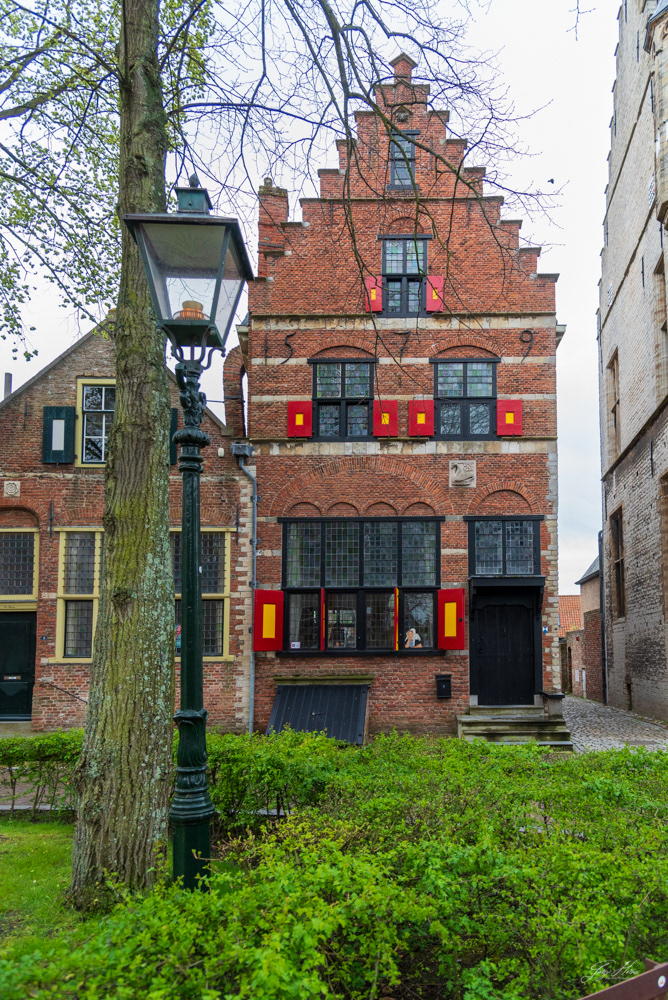
Gothic House
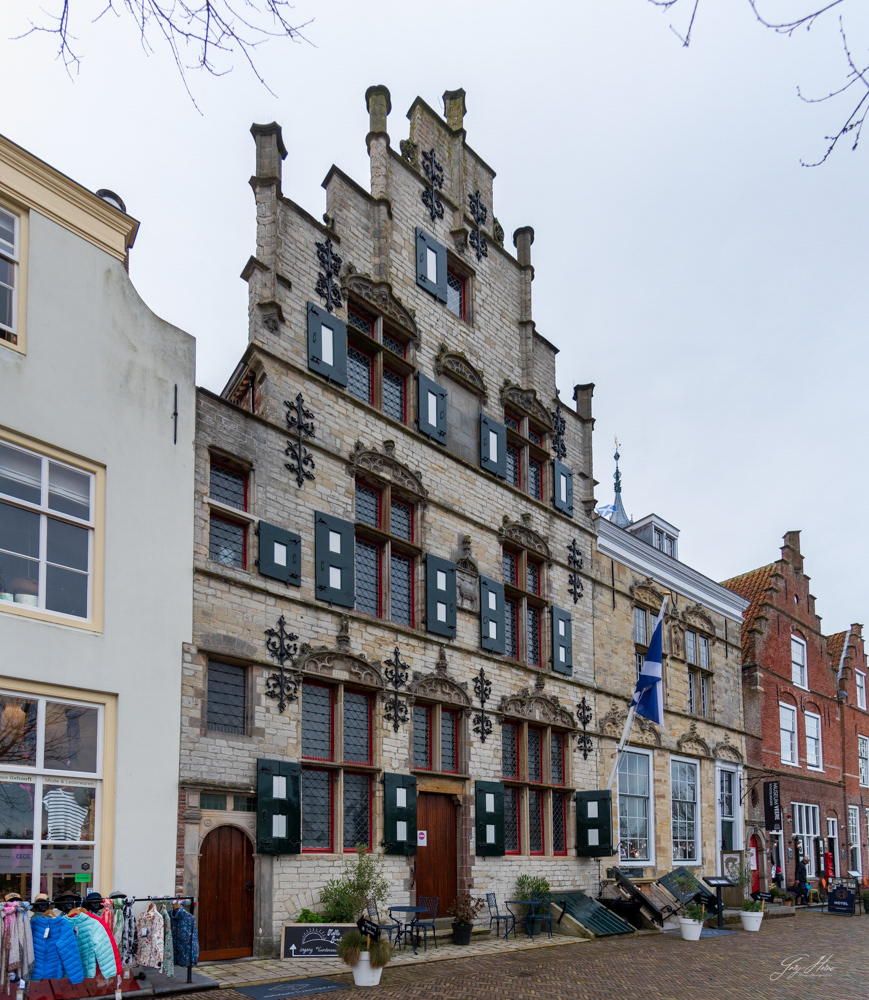
De Schotse Huizen
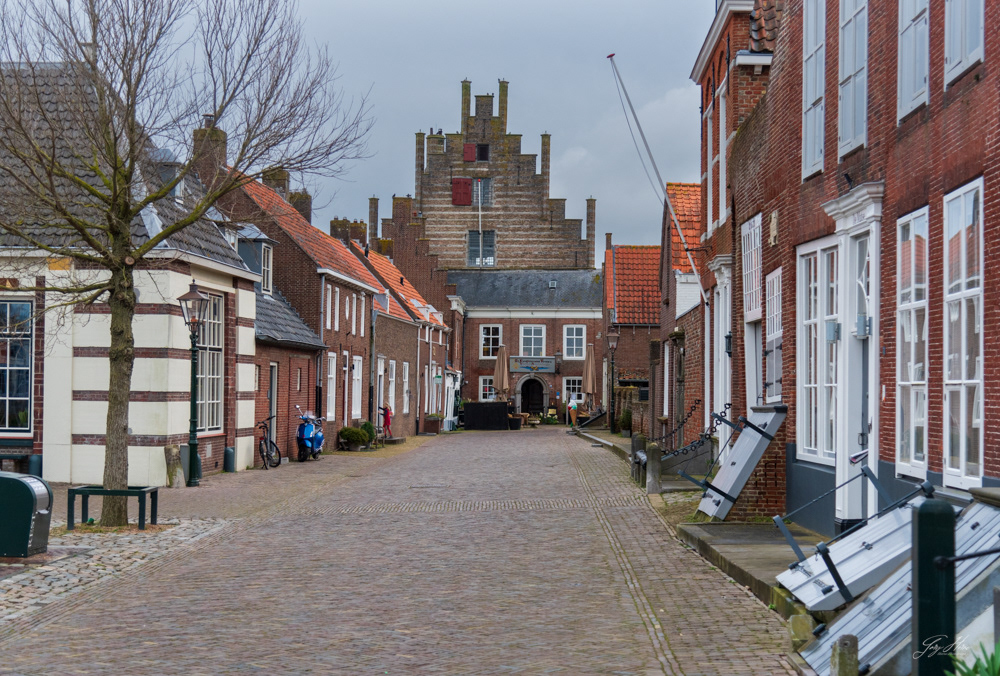
Veere
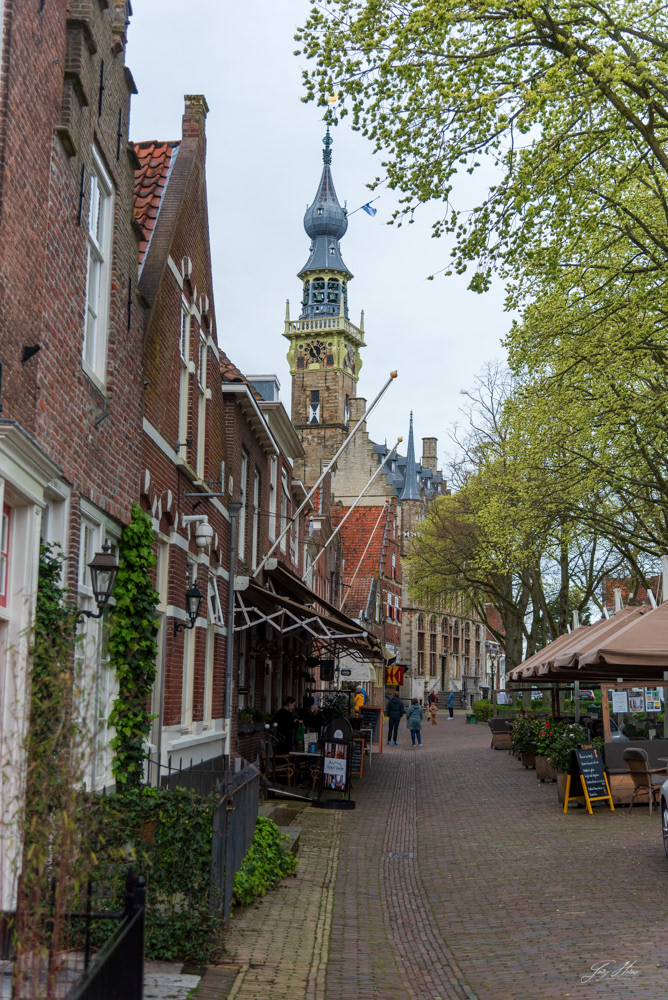
Stadhuis
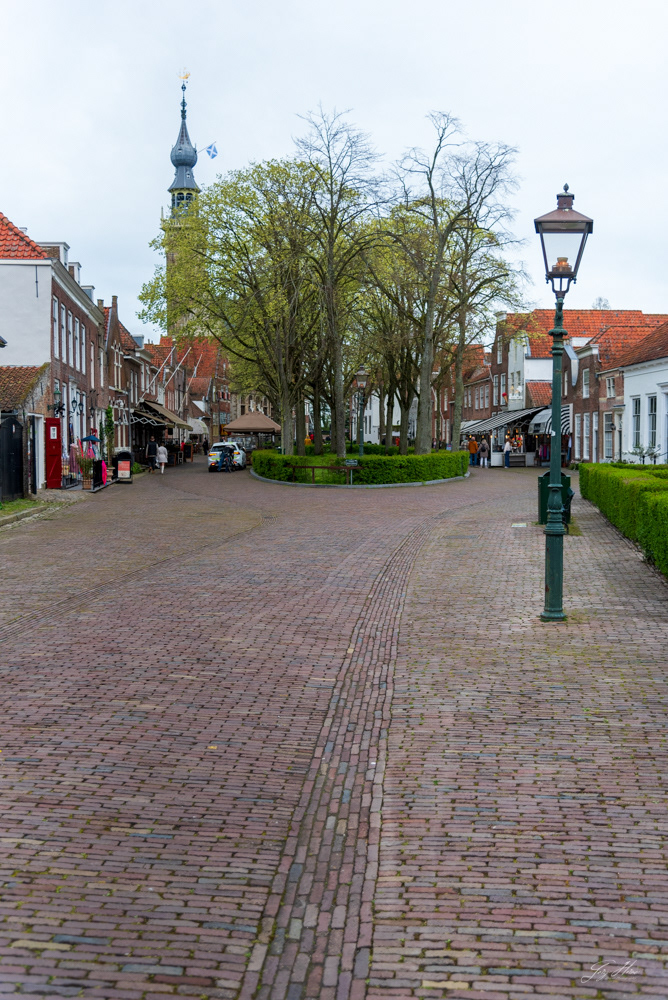
Town Square

Stadhuis van Veere
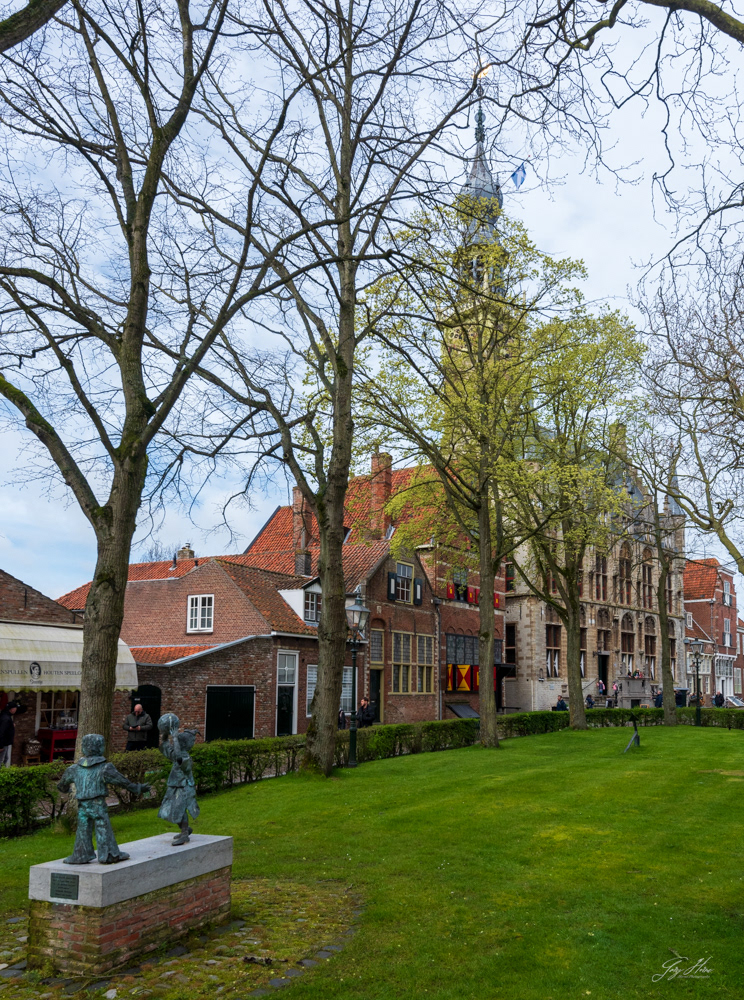
Village Green
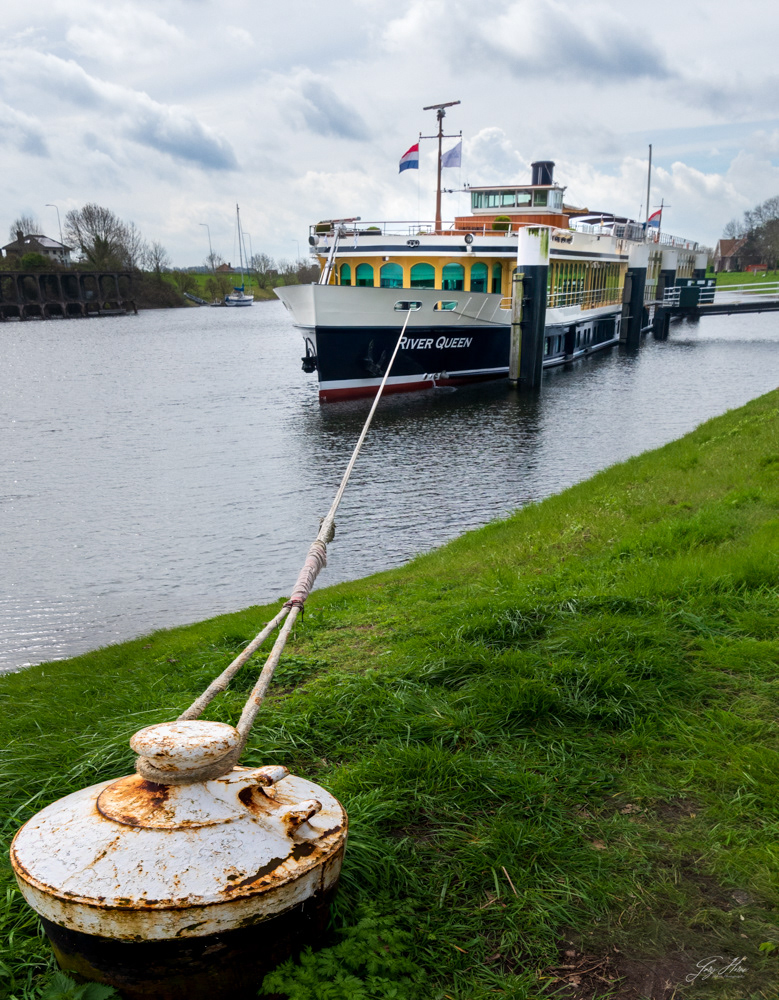
Our Ship
From Veere we left the Netherlands behind as the ship sailed to Ghent in Belgium. We opted for the tour of Bruges and hopped on the bus for a short ride.
Belgium only became an independent country in 1830. Bruges is the capital of West Flanders in northwest Belgium. It is known for its canals, cobbled streets and medieval buildings. With all the canals it is often referred to as the Venice of the North. The Bruges grew up around a fort built by the first Count of Flanders as a defense against Viking invaders. We took a walking tour of the city along with a canal cruise.
Bruges is also know for its chocolate and we bought some in a shop called The Chocolate Line. We had lunch off the main square before returning to the ship.

Gunpowder Tower
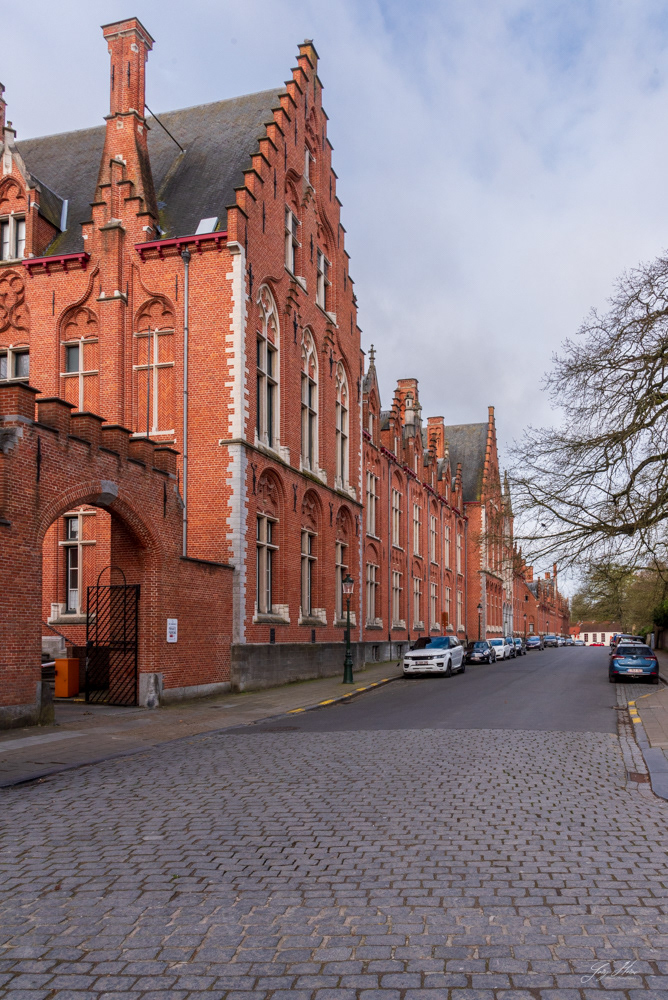
Minnewater Clinic
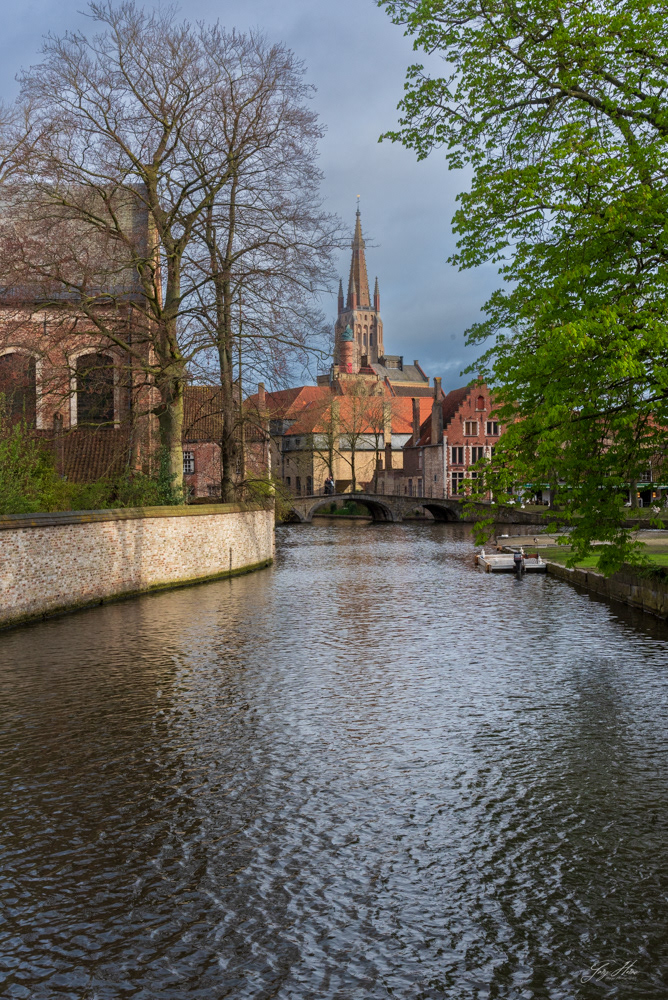
Bruges

Swan

Church of Our Lady

Bruges

Bruges
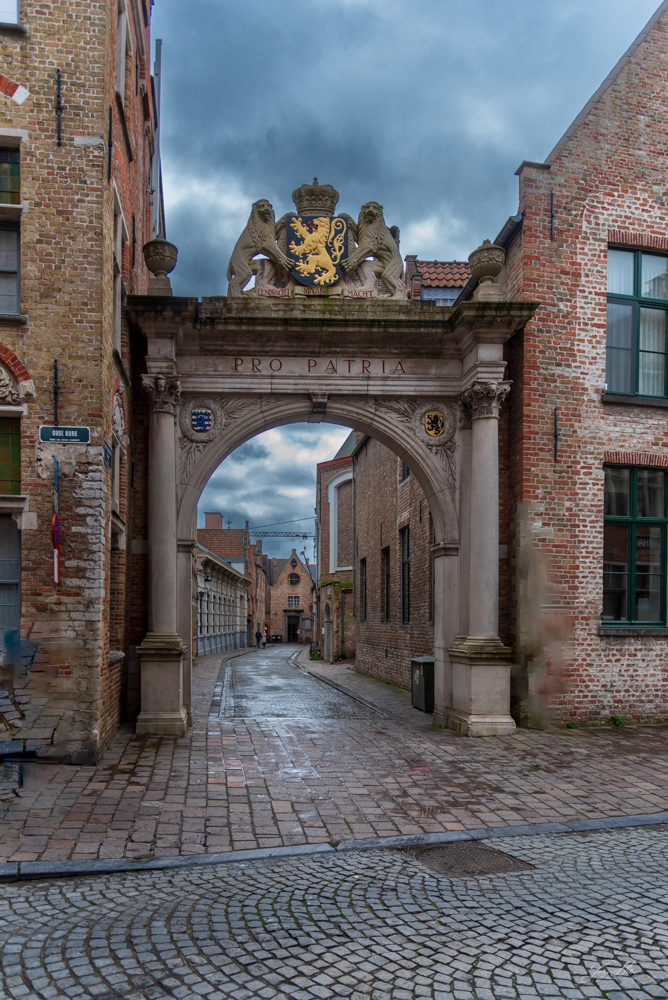
Pro Patria Gate
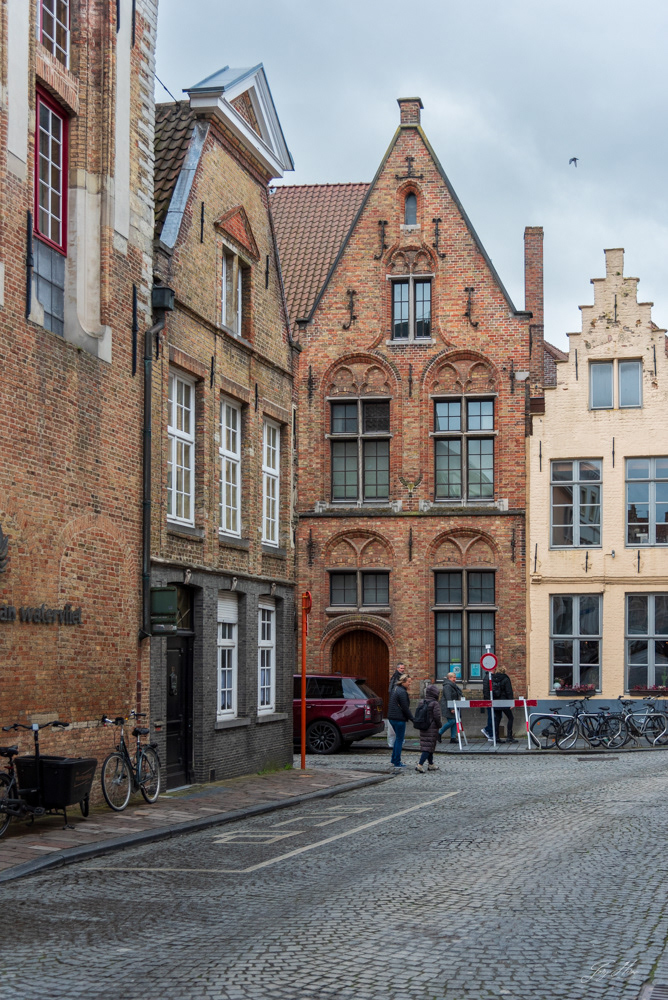
Bruges
Bruges

Canal in Bruges
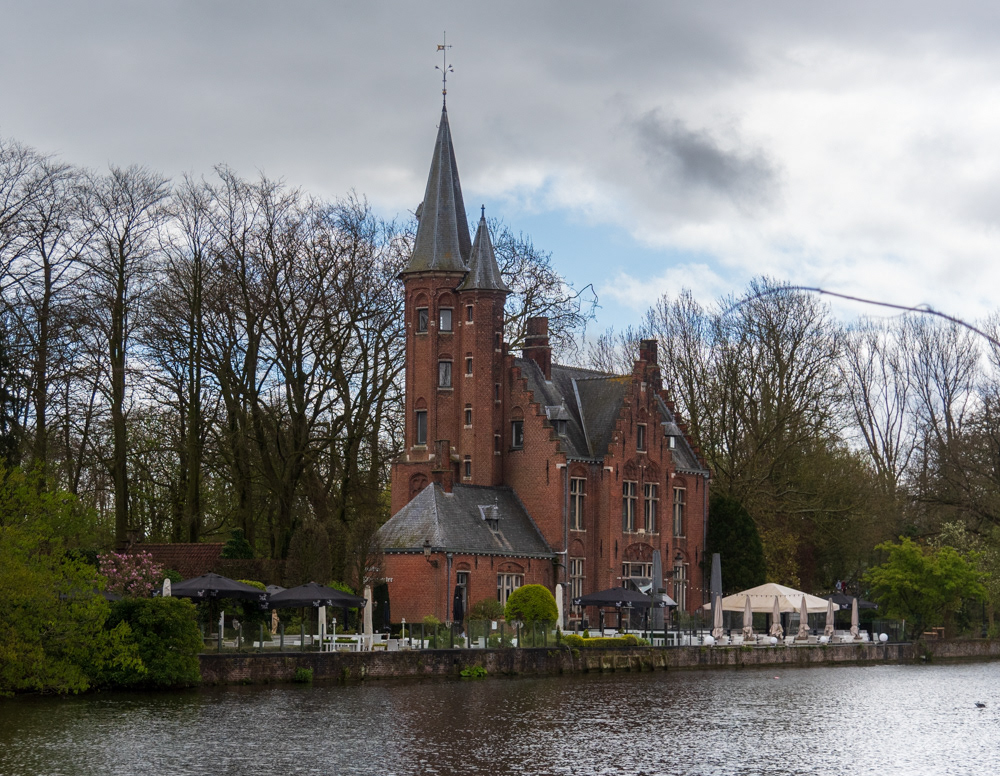
Minnewater Park

at Coach Stop
Overnight the ship sailed to Antwerp for our last day of touring.
Brussels is about an hour from Antwerp by bus and we opted for that tour. Brussels is now the administrative center of the European Union and headquarters for NATO. The city is in the Flemish-speaking region of Flanders in the north. In the south of Belgium (the Walloon Region) they speak French.
We drove by the Royal Palace and and got off the bus to take pictures of the Atomium. The Atomium was built for the 1958 World's Fair as a tribute to scientific progress. We then went on to park at the church of Laken and walked around the old town. The city's central square is considered the most beautiful square in the world, the Grand-Place of Brussels.
Like all tourists, we had to visit the Manneken Pis (Dutch for Little Pissing Man) which is a 21.9 inch tall bronze fountain sculpture a naked little boy urinating into the fountain's basin. The sculpture was designed by Jérôme Duquesnoy in 1619. Due to frequent theft a replica is displayed outside with the original in the Brussels City Museum. On our visit the statue was clothed in a football uniform. There are many legends as to what this statue depicts.
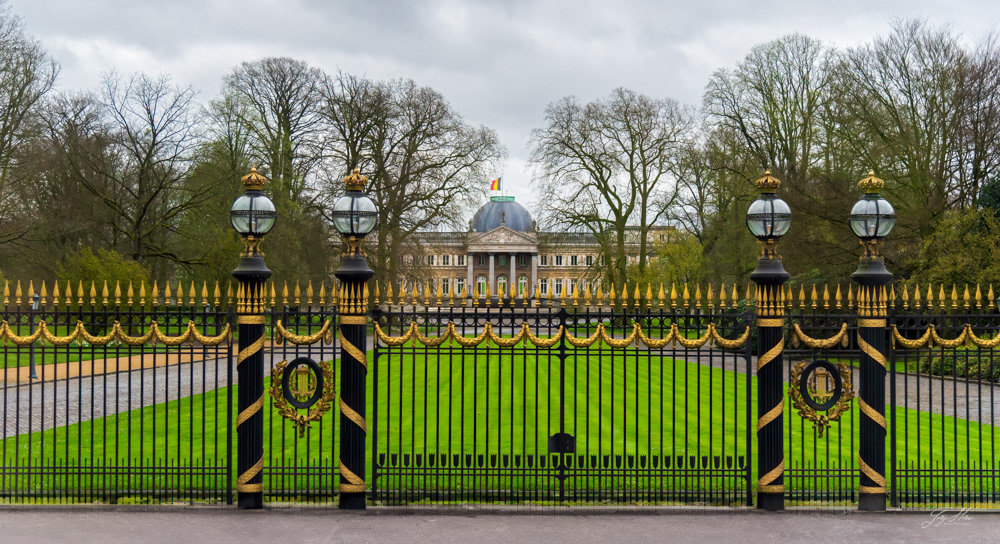
Royal Palace
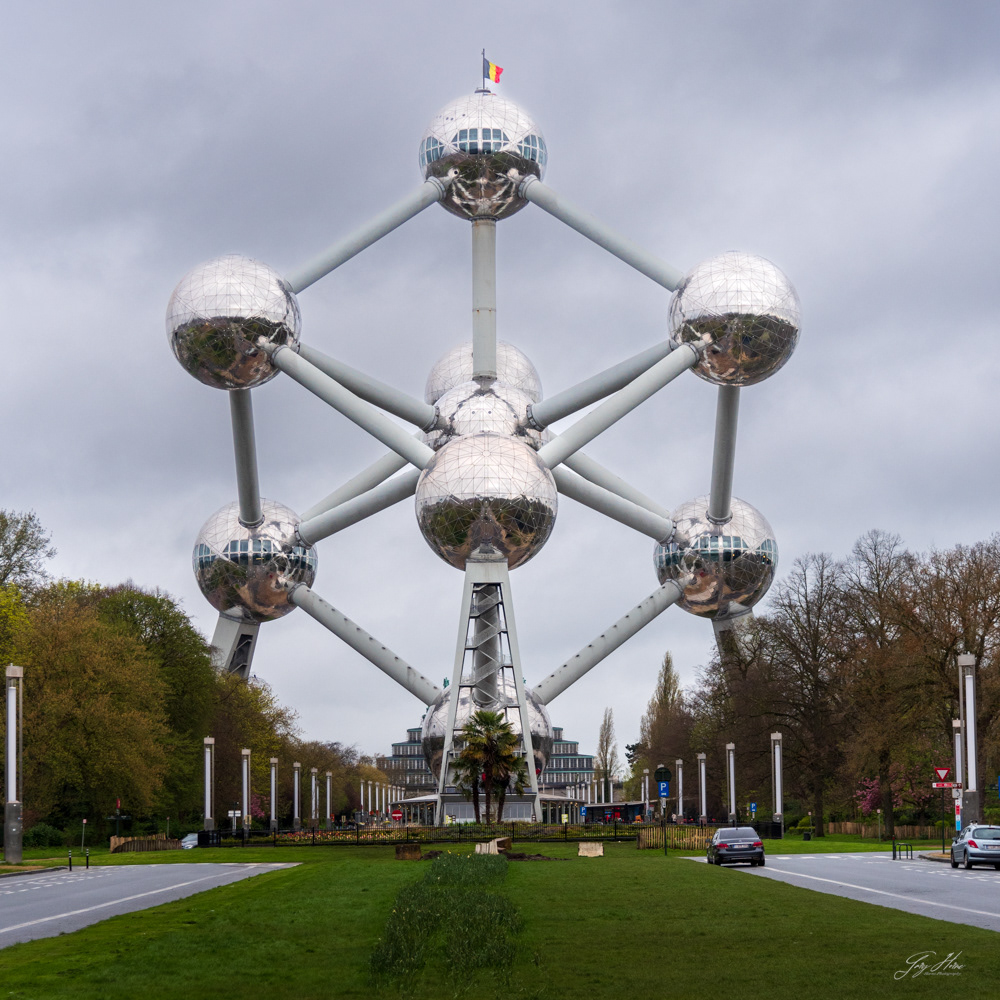
Atomium
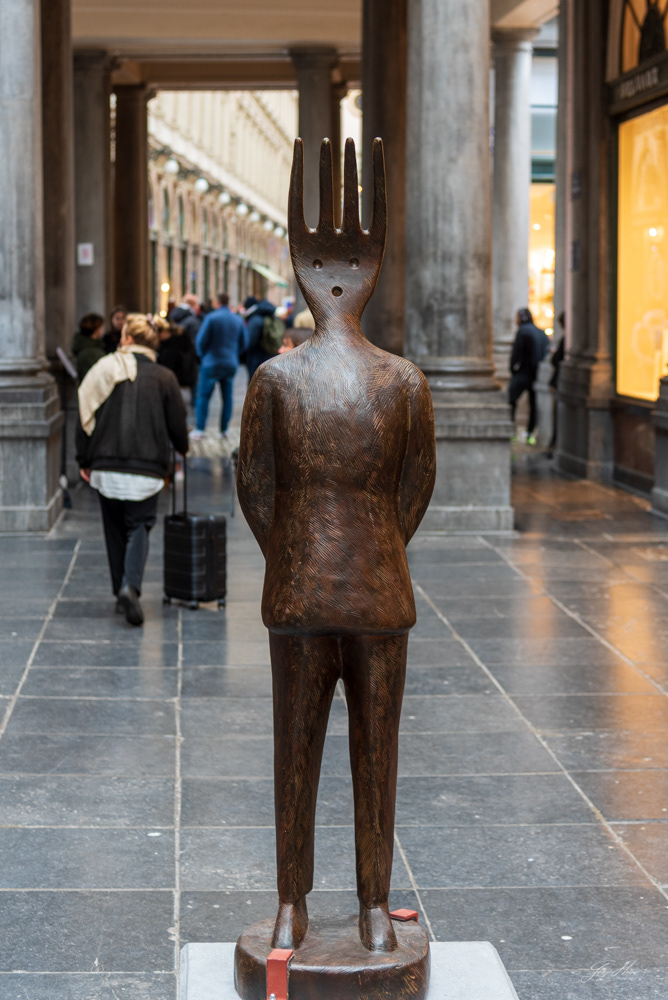
Sculptures Walk
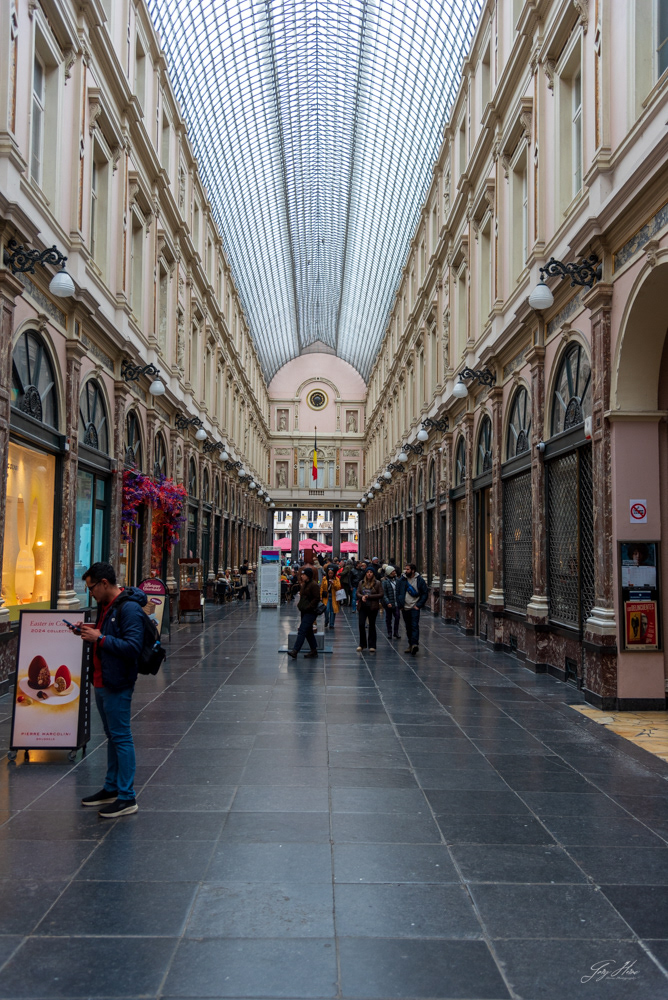
Royal Gallery of Saint Hubert
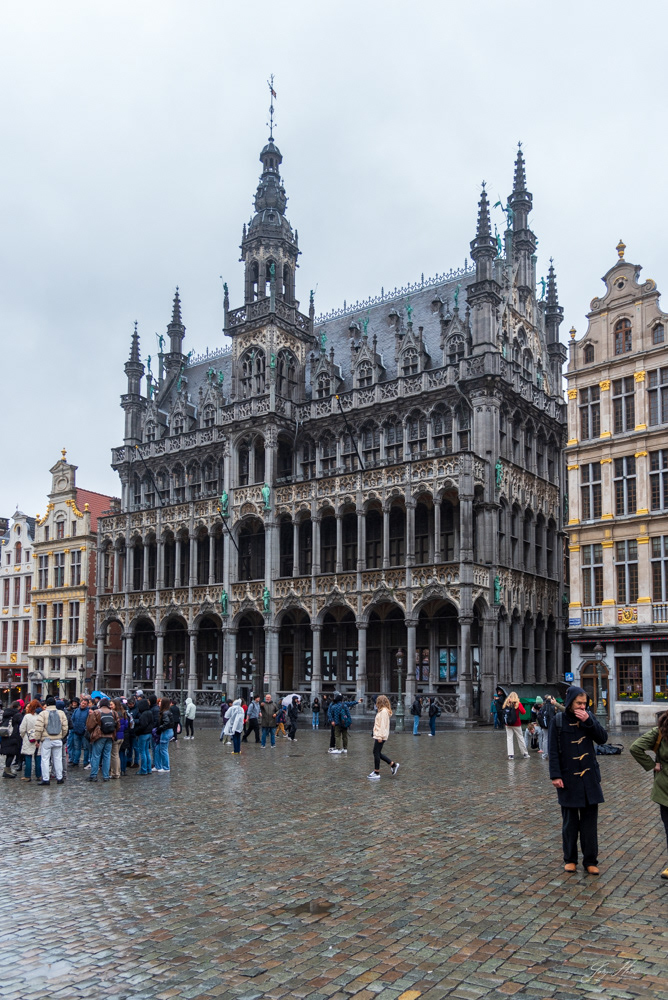
Kings House

Manneken Pis
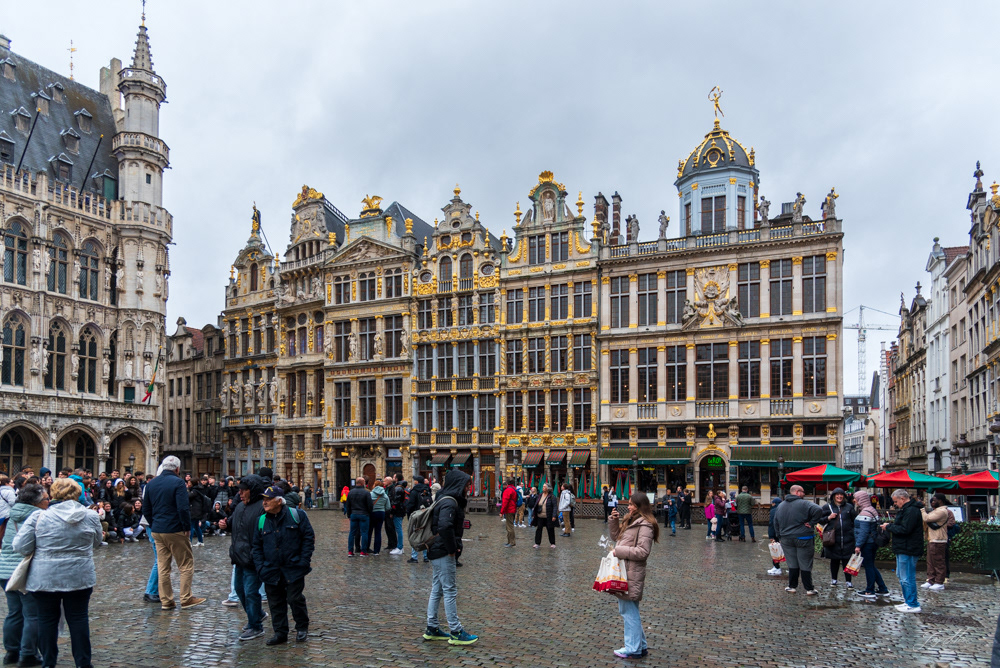
Grand Place

Huis der Hertogen van Brabant

Grand Place
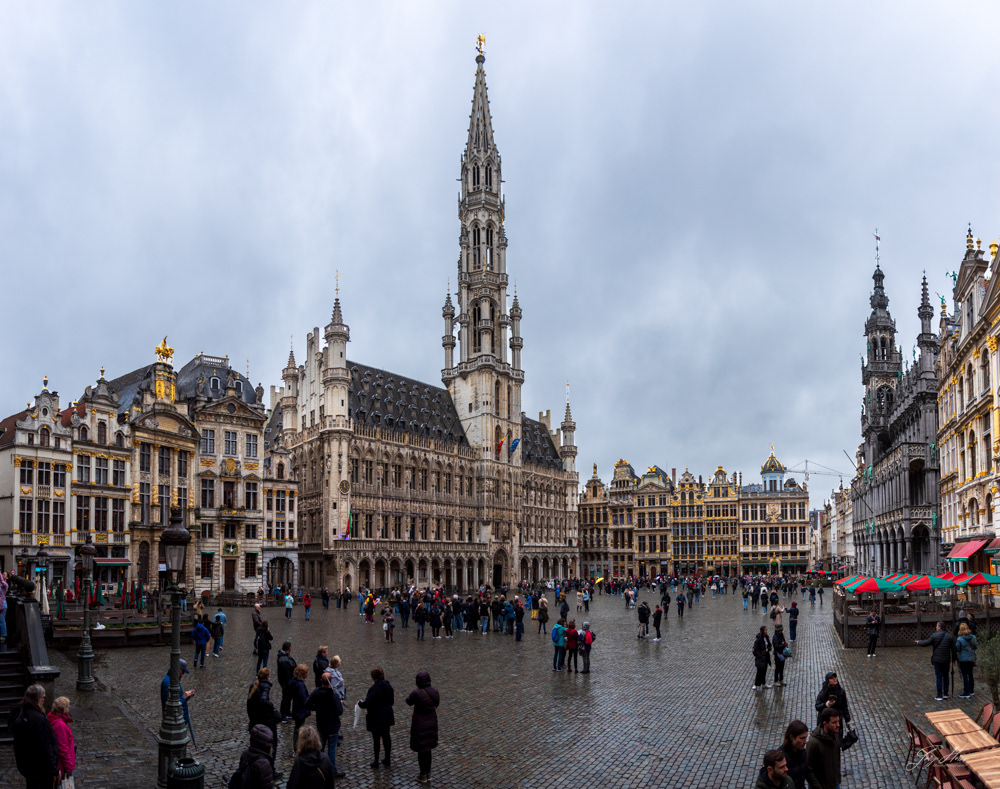
Grand Place
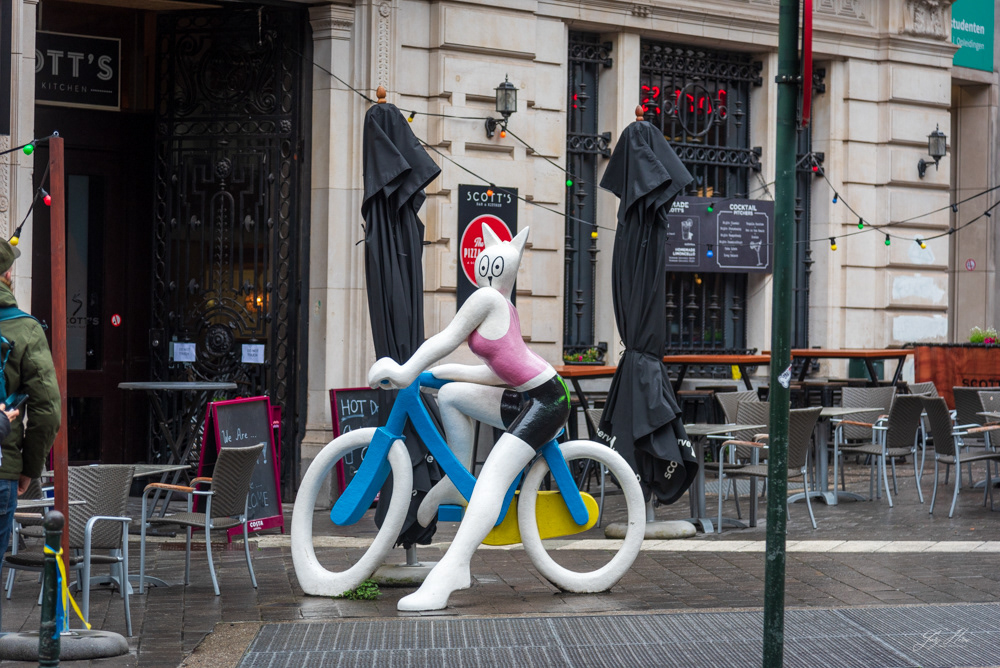
Modern Art
When we returned to the ship we took a short walking tour of Antwerp.
Antwerp is a port city on the River Scheldt, with history dating to the Middle Ages. In its center, the centuries-old Diamond District houses thousands of diamond traders, cutters and polishers. Antwerp’s Flemish Renaissance architecture is typified by the Grote Markt (central square) in the old town. In many ways the square is as impressive as that of Brussels.
The statue of Nellow and Patrasche in front of the Cathedral of Our Lady is dedicated to the story of a Flemish boy and his dog. The story is a cult sensation in Japan because of a 1970's anime television show.
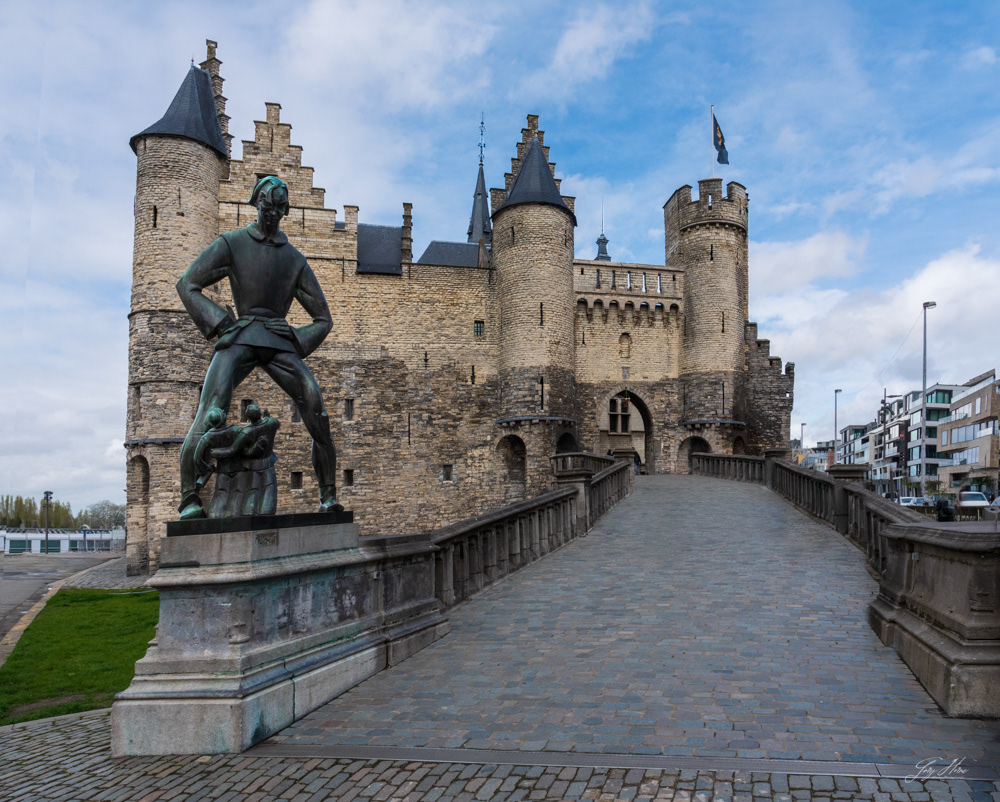
Het Steen

Cathedral of Our Lady
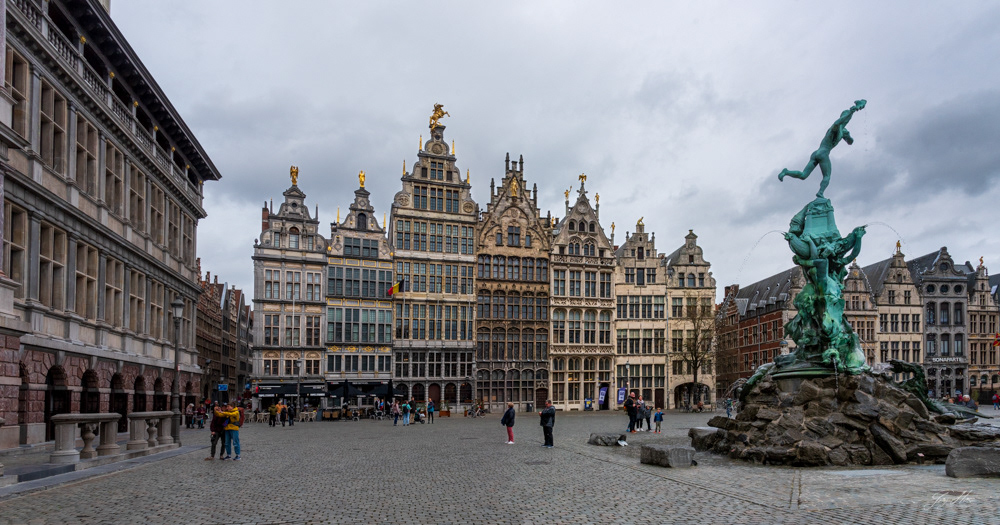
Grote Markt

City Hall

Brabo's Monument

Nello & Patrasche

Virgin Mary

Museum Vleeshuis
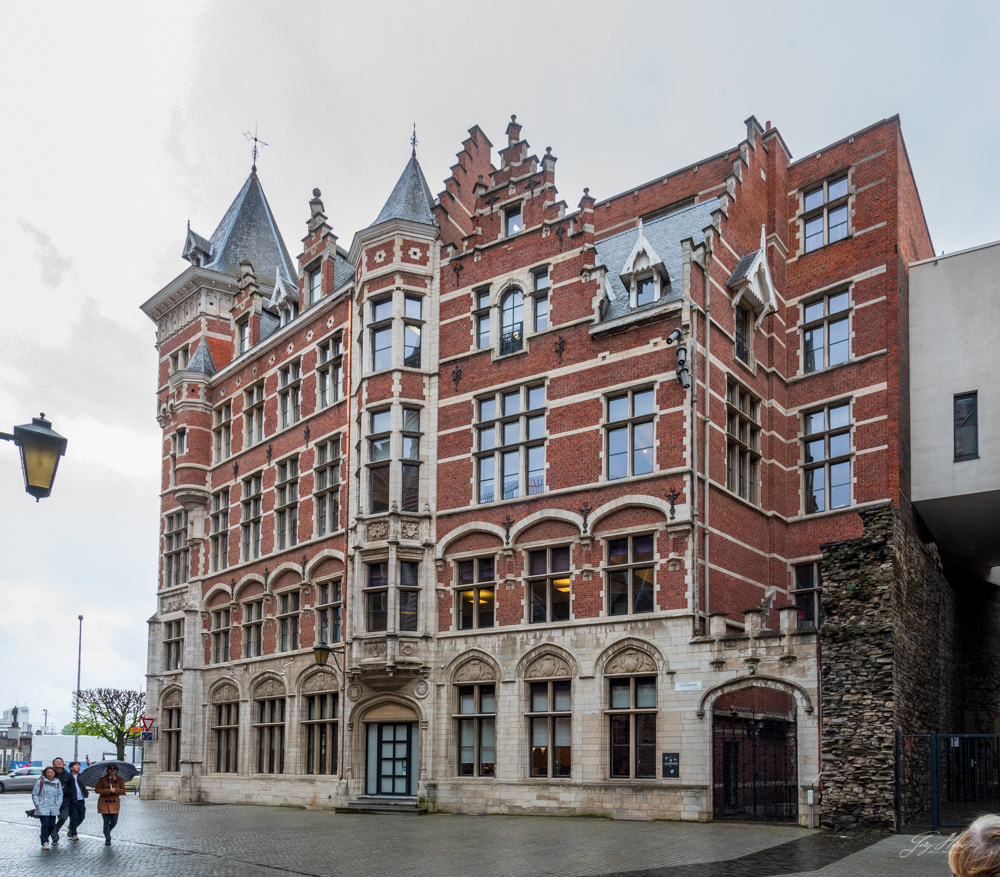
Museum Vleeshuis
As our tour wrapped up we returned to the ship and our last dinner on board.
In the morning we disembarked from the River Queen and went to Brussels airport for the flight home.

